




Smart-Indigo™ makes the difference for the denim world. Offering a liquid-indigo production where the only waste product is oxygen! A revolutionary technology, which protects the environment, creates safer and healthier workplaces and offers a optimized production.






63rd DORNBIRN-GFC Call For Papers
Dates: September 11th to 13th 2024. Venue: Dornbirn Austria.

CAITME 2024
Dates: September 11th to 14th, 2024.
Venue: Tashkent, Uzbekistan.

Cinte Techtextil China
International Trade Fair for Technical Textiles and Nonwovens
Dates: September 19th 21st, 2024.
Venue: Shanghai New International Expo Centre, Shanghai, China

HVACR Trends 2024
Dates: October 04th to 5th, 2024. Venue: Karachi Marriott Hotel

ITMA ASIA + CITME 2024
Dates: October 14th to 18th, 2024. Venue: NECC, Shanghai, China.

JIAM 2024 OSAKA
Dates: November 27th to 30th 2024. Venue: Osaka, Japan.

Heimtextil 2025, Frankfurt
Dates: January 14th, to 17th, 2025
Venue: Frankfurt am Main.

DOMOTEX Hannover 2025
Dates: January 16th to 19th 2025.
Venue: Hannover, Germany.

Istanbul Yarn Fair
Dates: February 13th to 15th, 2025.
Venue: Istanbul, Turkey.

Textile Asia 2025, Karachi
Dates: April 12th to 14th 2025. Venue: Expo Centre, Karachi.
Textile Asia 2024, Lahore
Dates: August 20th to 22nd 2024. Venue: Lahore Expo Centre.

IGATEX Pakistan 2025, Karachi
Dates: April 24th to 26th 2025. Venue: Expo Centre, Karachi.

iCADEX Pakistan 2025, Karachi
Dates: April 24th to 26th 2025. Venue: Expo Centre, Karachi.

FESPA 2025
Dates: May 06th to 09th 2025. Venue: Messe Berlin in Germany.

DOMOTEX asiaCHINAFLOOR 2025
Dates: May 26th to 28th 2025. Venue: NECC, Shanghai, China.

ITMA ASIA + CITME, Singapore 2025
Dates: October 28th to 31st, 2025. Venue: Expo Centre Singapore.

Techtextil 2026
Dates: April 21st to 24th, 2026
Venue: Frankfurt, Germany.
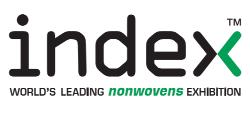
Index 2026
Dates: April 21st to 24th, 2026. Venue: Palexpo, Geneva, Switzerland.

ITMA 2027
Dates: September 16th to 22nd, 2027. Venue: Hanover, Germany.
PAKISTAN TEXTILE JOURNAL - September 2024




Founded in 1951 by Mazhar Yusuf (1924-2009)
Publisher Nadeem Mazhar
Editor in Chief Amina Baqai
Associate Editor Nimrah Nadeem
Production Manager Mazhar Ali
Layout & Design
Noor M. Jaan
Website / Social Media
Minhaj Ali
Hony-Editorial Board
Dr. Hafizur Rehman Sheikh Ph.D (UK) F.T.I. (UK)
Syed Mahfooz Qutab C.TEX, F.T.I (U.K), B.Sc. Fellow I.C.T.T Atlanta, GA; (USA)
Dr. Zubair Bandukda PhD (Textiles), CText ATI
Engr. Naeem Ilyas Khanani
Editorial & Advertising Office
B-4, 2nd Floor, 64/21, M.A.C.H, Miran M. Shah Road, Karachi - Pakistan
Tel: +92-21-34311674-5
Fax: +92-21-34533616
Email: info@ptj.com.pk
URL: http://www.ptj.com.pk
PTJ Europe Ltd.
Registered Office: Dairy House, Money Row Green, Holyport, Maidenhead, Berkshire, SL6 2ND, United Kingdom.
Registered no. 09141989
Tel: +44 792 2228 721
Available on Gale and Factiva affiliated international databases through Asianet Pakistan
Printed at: Color Plus Korangi, Karachi. Published by Nadeem Mazhar from D-16, K.D.A. Scheme No.1. Karachi.


















eVent Fabrics® prepares for a PFAS-free future, offers eVent BIO and eVent alpineST laminates .
ITMA: Living with blends and looking beyond the backyard
RE&UP wins ITMF Start-up Award 2024
Smart fibers and fabrics for cool and restful nights .
VDMA members participated in CAITME expo in Uzbekistan

.23

Archroma introduces Color Management+ to elevate color development and execution for more sustainable textiles and fashion
DyStar publishes integrated sustainability report for FY2023/24
From lab to label: The chemistry between production and catwalks is finally right .28
Swiss Textile Machinery Manufacturers on tour: Innovations to be presented at Symposium in Charlotte, N.C. .

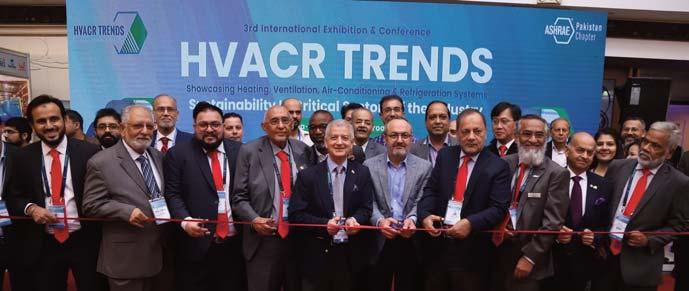
“JIAM 2024 OSAKA” reveals promising signs for increasing number of exhibitors and size of exhibition space covered 6 months prior to the show .
.32
Yarn Expo Autumn facilitates global eco-transition with increased international participation and wider product offering
4th HVACR Trends Expo & Conference to be held on 4-5 October 2024 at the Karachi Marriott Hotel
Benninger’s FabricMaster revolutionizes textile dyeing in India
Discover Stäubli technical weaving solutions at techtextil North America
Biancalani Textile Machinery: Textile lovers fabric quality preservation
Monforts: Latest on hydrogen finishing at Dornbirn 2024
BRÜCKNER: Energy costs, security of supply and the future of EU textile industry .44
Trust protocol grower enrollment climbs for fifth straight year
Oerlikon Neumag: Automotive supplier Sailuda integrates backwards in BCF yarn production
Rieter: Semi-automated rotor spinning machine R 37
Santoni announces Sao Paulo flagship store grand opening: A pivotal step of the global expansion
Trützschler’s IDF in India: Flexibility for the upcycling of textile waste
iTextiles® and LYCRA® envision innovative, creative thoughts at Create2Inspire
The 28th Textile Asia International Exhibition and Conferences 2024
Glimpses of Textile Asia 2024
Roadmap for a sustainable textile industry in Pakistan to capitalize true textiles export potential
By Engr. Naeem Khanani, Associate Editor, Pakistan Textile Journal; Director, Fahim, Nanji & deSouza FND Consulting Engineers; Co-Author: Engr. Najib Rehman, Associate FND Consulting Engineers
The evolving textile trade dynamics between Pakistan and China .
.61 by Nadeem Mazhar, Managing Editor, Pakistan Textile Journal.




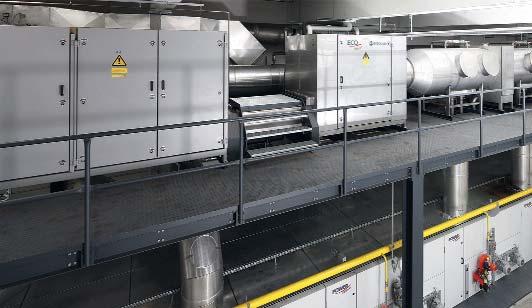
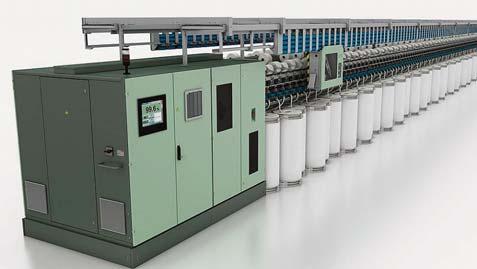
48

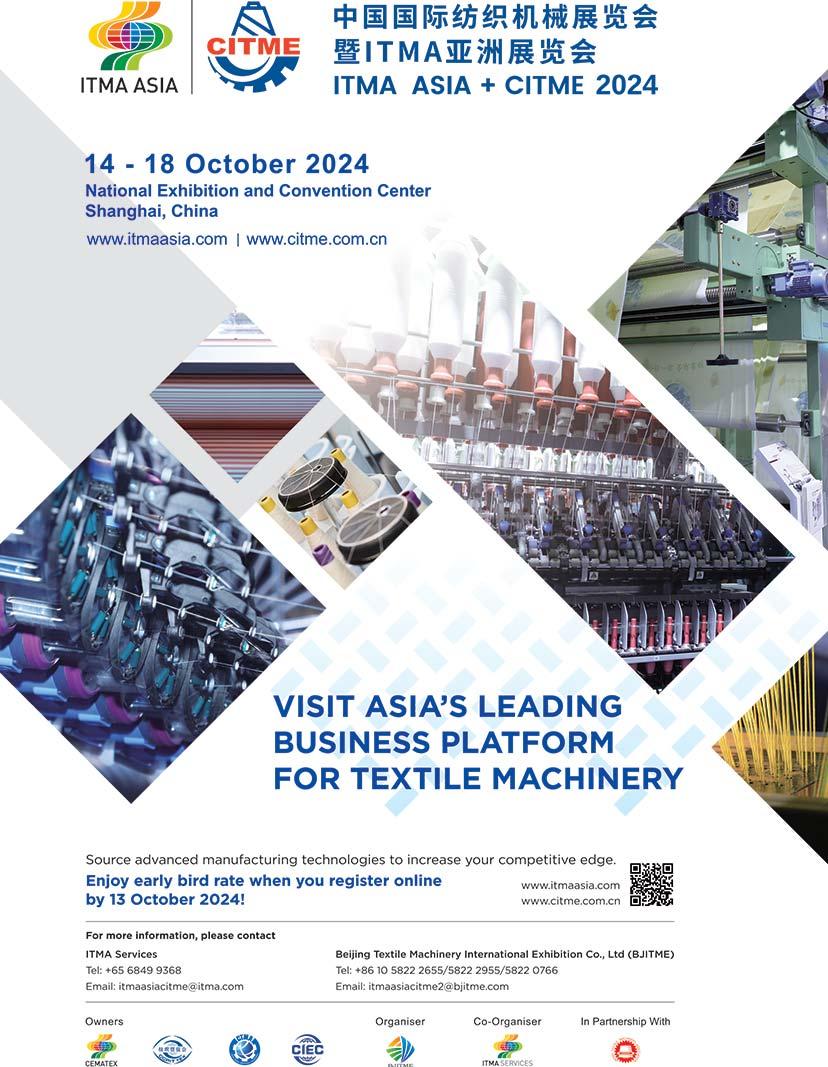
The recent approval by the International Monetary Fund (IMF) of a $7 billion Extended Fund Facility (EFF) for Pakistan marks a pivotal moment for the nation’s economic landscape. While this decision aims to stabilize the country’s economy amidst mounting challenges, its repercussions will undoubtedly ripple through various sectors. Among them, the textile industry — a cornerstone of Pakistan's economy — stands to experience significant impacts, both positive and negative.
For decades, textile and apparel manufacturing has been the backbone of Pakistan's economy, accounting for approximately 60% of the country’s total exports and employing millions. However, the industry has faced a series of challenges, including escalating energy costs, outdated technology, and stiff international competition. The infusion of funds from the IMF presents a crucial opportunity for Pakistan to address these systemic issues.
The EFF program stipulates rigorous economic reforms, primarily targeting the fiscal deficit, exchange rate stabilization, and structural reforms. For the textile sector, this could mean increased investments in technology and innovation, as the government may be compelled to allocate resources towards modernizing textile plants and enhancing productivity. Such developments are essential if Pakistan aims to compete effectively in the global market, particularly amidst rising production costs in traditional manufacturing hubs.
Moreover, the IMF’s requirements for fiscal discipline could lead to a reevaluation of subsidies for the textile industry. Historically, these subsidies have helped manufacturers maintain competitiveness. However, should the government reduce or eliminate such financial support, textile producers may face more significant operational challenges. The impending pressure on margins could strain businesses that are already struggling with liquidity issues.
Meanwhile, the devaluation of the Pakistani Rupee, a likely scenario under the IMF's program, could provide a dual-edged advantage for the textile sector. While it may raise the cost of imported raw materials and machinery, it also makes Pakistani textiles more affordable in international markets, potentially boosting export sales. If leveraged correctly, Pakistan could enhance its market share, particularly in high-demand regions where competitive pricing is vital.
Additionally, the textile sector must prepare for a shifting global landscape. Consumers increasingly seek sustainable and ethically produced goods. This societal shift presents an opportunity for Pakistan’s textile industry to invest in sustainable practices, aligning with global trends while enhancing brand appeal. Funds from the IMF could help facilitate this transition, allowing for eco-friendly technologies and practices.
In conclusion, the IMF’s approval of the EFF program presents both challenges and opportunities for Pakistan’s textile industry. Stakeholders must remain vigilant in navigating these turbulent waters, embracing reforms while simultaneously investing in modernization and sustainability. By fostering resilience and adaptability, the textile sector can emerge stronger from the economic storm, safeguarding its vital role in Pakistan’s economy and reinforcing its position on the global stage.
As the implementation of the EFF program unfolds, the focus must remain not just on immediate financial stabilization but also on the long-term growth and competitiveness of one of Pakistan's most crucial industries.


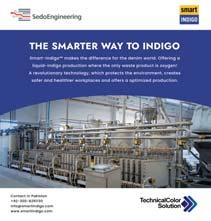
1
The All-Pakistan Textile Mills Association (APTMA) has called on the federal government to renegotiate agreements with Independent Power Producers (IPPs) to lower exorbitant electricity tariffs. These high costs have severely impacted industrial operations and led to widespread job losses.
2
The Punjab government has embarked on a mission to enhance cotton plantation across the province. Provincial Minister of Agriculture, Syed Ashiq Hussain Kirmani, announced this initiative during a conference on cotton research and

development held at Agriculture House earlier this month. He emphasized that Chief Minister Punjab Maryam Nawaz is committed to reforming the research and development system to meet contemporary needs.
3
Pakistani entrepreneurs with investments in Bangladesh’s textile sector are increasingly worried about the recent turmoil and unrest in the country. The potential imposition of martial law in Bangladesh raises concerns about similar instability as seen in Pakistan, which could adversely affect their operations.
1
The Bangladesh Garment Manufacturers and Exporters Association (BGMEA) has called on ready-made garment (RMG) factory owners to ensure timely wage payments to workers in response to recent unrest in the sector. Protests by garment workers demanding better wages and improved working conditions have disrupted operations in several factories, escalating tensions within the industry.
2
Wage negotiations for Cambodia’s garment sector have commenced, bringing together government officials, labor unions, and industry employers to determine the minimum wage for 2025. This process is pivotal for the sector, which employs over 700,000 workers and is a
4
Textile and clothing exports in Pakistan saw a modest growth of just 0.93% in FY24, highlighting the challenges the sector faces in staying competitive with regional rivals. The implementation of stringent taxation measures during the current fiscal year appears to be a key factor hampering growth. The impact of soaring energy costs has also been significant, with export figures for June 2024 reflecting a 3.91% decline compared to the previous year, according to data released by the Pakistan Bureau of Statistics.
5
Pakistan's textile and leather industry has raised alarms over escalating electricity tariffs, unsustainable taxation, and a growing liquidity crunch, citing these as major obstacles to boosting exports.
6
In August 2024, Pakistan’s textile sector demonstrated a strong resurgence, with exports increasing by 13% to $1.64 billion compared to $1.45 billion in August 2023, according to the Pakistan Bureau of Statistics (PBS). Compared to July 2024, August's textile exports saw a notable 29.4% increase.

major contributor to Cambodia’s economy, generating substantial export revenue annually.
3
In the first seven months of 2024, China’s textile and garment exports exhibited a modest yet notable growth, reaching $186.25 billion. This represents a 1.1% year-onyear increase. Specifically, textile exports rose by 3.7% to $88.54 billion, while garment exports experienced a slight decline of 1.2%, totalling $97.71 billion.
4Germany’s economy has contracted by 0.3% in the second quarter of 2024, marking the second consecutive quarter of negative growth. This persistent downturn highlights the challenges facing Europe’s largest economy, including sluggish industrial performance, high
inflation, and weakened export demand.
5
An international textile exhibition is currently underway in Tehran, featuring over 290 domestic and foreign companies from 13 countries. The event, known as the Iran International Textile Industry Exhibition (IRANTEX), provides a platform for showcasing industry advancements, exploring investment opportunities, and discussing business and trade prospects.
6
South Korea has unveiled an extensive plan to elevate its textile and fashion sector with the launch of the Textile and Fashion Industry Competitiveness Strategy. This initiative aims to significantly enhance Korea’s global market share in industrial and eco-friendly textiles from the

current 2-3% to 10% by 2030, and to increase digital transformation levels from 35% to 60%.
7
In the first half of 2024, the United States saw a 3.17 percent drop in textile and clothing exports, totaling $11.5 billion. This decrease continues a trend that began in the first quarter and accelerated throughout 2023, reflecting ongoing challenges in the global market. Imports have also decreased, driven by persistent inflationary pressures.
8
In the first half of 2024, Uzbekistan’s textile exports totaled $1.5 billion across 55 countries, reflecting a 5.3% decrease compared to the same period last year, according to official data.

The All-Pakistan Textile Mills Association (APTMA) has called on the federal government to renegotiate agreements with Independent Power Producers (IPPs) to lower exorbitant electricity tariffs. These high costs have severely impacted industrial operations and led to widespread job losses.
In a statement earlier this month, APTMA Chairman highlighted the stark discrepancy between Pakistan’s installed generation capacity, which exceeds 40,000 MW, and its peak demand and transmission capacity, which is only 25,000 MW. This imbalance has resulted in significant excess and underutilized generation capacity. Despite this, the government is obligated to make Rs. 2 trillion in capacity payments to 40 IPP companies annually, even when no electricity is generated or supplied, placing a heavy economic burden on the country.
The Chairman emphasized that capacity charges make up two-thirds of the total cost, with fuel costs accounting for the remaining one-third.
Investigations have revealed that IPPs have been enjoying returns exceeding 73 percent in dollar terms, far higher than international standards. These unfavorable contractual arrangements, rooted in the 1994 Power Policy, have contributed to a spiraling circular debt, which reached Rs. 2.64 trillion in February 2024.

He also pointed out that guarantees indexed to the US dollar mean any depreciation of the Pakistani rupee increases returns for IPPs, further straining the government’s finances. Initially, the return on equity for IPPs was set at 18% and later reduced to 12% in the 2002 Power Policy, still high by global standards. Comparisons with similar projects in other countries suggest many IPPs were funded through inflated invoicing on capital goods, leading to perpetual returns on non-existent equity.
The Chairman noted that the tariff for coal-based plants in Pakistan is 9 cents, significantly higher than the 5.6 cents for similar plants in Bangladesh. For FY25, imported coal-based plants have the highest capacity charge of Rs. 60.48/kWh compared to Rs. 26.01/kWh for the second-highest capacity charge among all thermal generation.
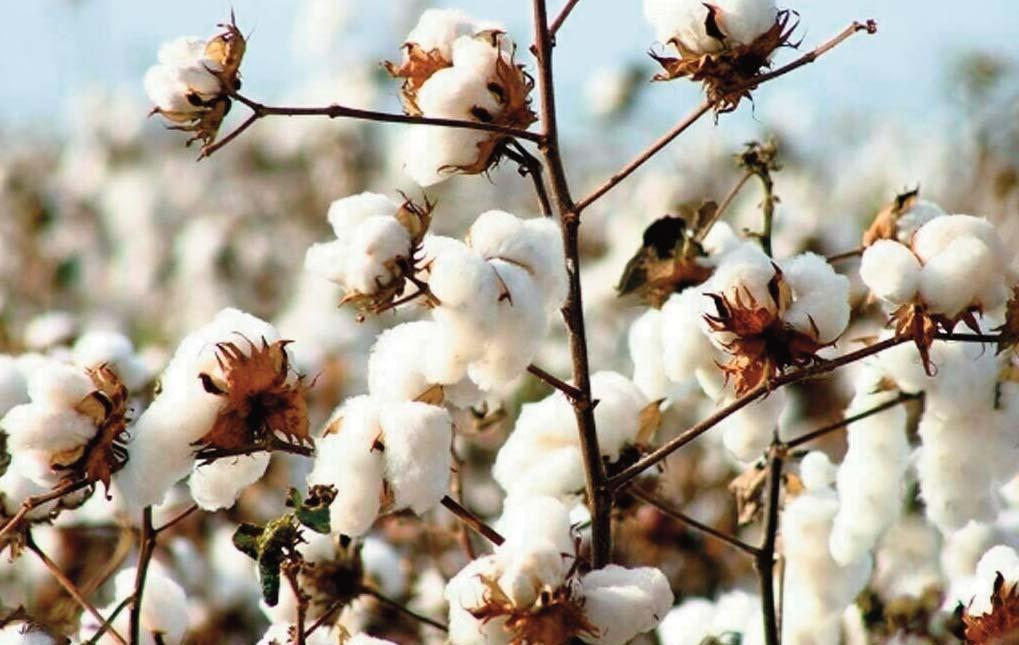
He also mentioned frequent misreporting and overbilling by IPPs under take-or-pay contracts protected by international law. Actual oil consumption of several oil-based plants is reportedly less than billed, and attempts to audit discrepancies are often obstructed legally. Operation and maintenance costs are similarly overstated, with actual expenses billed at significantly higher rates.
The Chairman warned that the recent surge in electricity rates could lead to civil unrest and discontent among the business community. He stressed the need for a comprehensive review of IPP agreements, price re-evaluation within legal bounds, and improved oversight to prevent over-invoicing. He called for examining the energy infrastructure for clauses related to misinformation and fraud, urging the federal government to devise a strategy to address IPP issues and ensure affordable electricity prices for the industry in the national interest.
The Punjab government has embarked on a mission to enhance cotton plantations across the province. Provincial Minister of Agriculture, Syed Ashiq Hussain Kirmani, announced this initiative during a cotton research and development conference held at Syed Ashiq Hussain Kirmani, Punjab Agriculture Minister

Agriculture House earlier this month. He emphasized that Chief Minister Punjab Maryam Nawaz is committed to reforming the research and development system to meet contemporary needs.

Minister Kirmani highlighted the decline in cotton cultivation due to the unavailability of quality seeds, which has confined cotton farming primarily to South Punjab. He stressed the necessity for collaboration between the public and private sectors to rejuvenate cotton production, noting that reviving the silver fiber industry would significantly boost the national economy.
The program's primary goal is to leverage the expertise of both public and private sectors to produce high-quality cotton seeds. The Minister underscored the urgent need to discover climate-smart cotton varieties with high productivity to address current challenges.
Secretary Agriculture Punjab Iftikhar Ali Sahu acknowledged the persistent
issues faced by the cotton crop over the past decade. He called for practical proposals from both sectors to tackle these challenges and emphasized the importance of developing a comprehensive plan of action based on the conference's recommendations. He assured that the technical opinions of all participants would be thoroughly considered.

Pakistani entrepreneurs with investments in Bangladesh’s textile sector are increasingly worried about the recent turmoil and unrest in the country. The potential imposition of martial law in Bangladesh raises concerns about similar instability as seen in Pakistan, which could adversely affect their operations.
Secretary Sahu also mentioned that the provincial government would seek support from the federal government to address issues requiring federal intervention.
The conference saw participation from notable figures, including Agriculture Secretary South Punjab Saqib Ali Attil, Dr. Muhammad Anjum Ali, former caretaker federal minister Kausar Abdullah Malik, Director Generals Agriculture Extension Chaudhry Abdul Hameed, Javed Salim Qureshi, Dr. Khalid Hameed, Asif Majeed, Saad Akbar Khan, Syed Hasan Raza, Dr. Sagheer Ahmed, along with other government officials and representatives from the private sector.
In recent years, several Pakistani textile entrepreneurs relocated their operations to Bangladesh, driven by factors such as lower production costs, preferential trade agreements, and improved infrastructure. Bangladesh, currently the world’s second-largest apparel exporter after China, has been making significant inroads into markets traditionally dominated by China, which faces sanctions from Western nations. Many of these entrepreneurs established their operations in Bangladesh’s special export processing zones, where they have benefited from a cost-effective production environment.
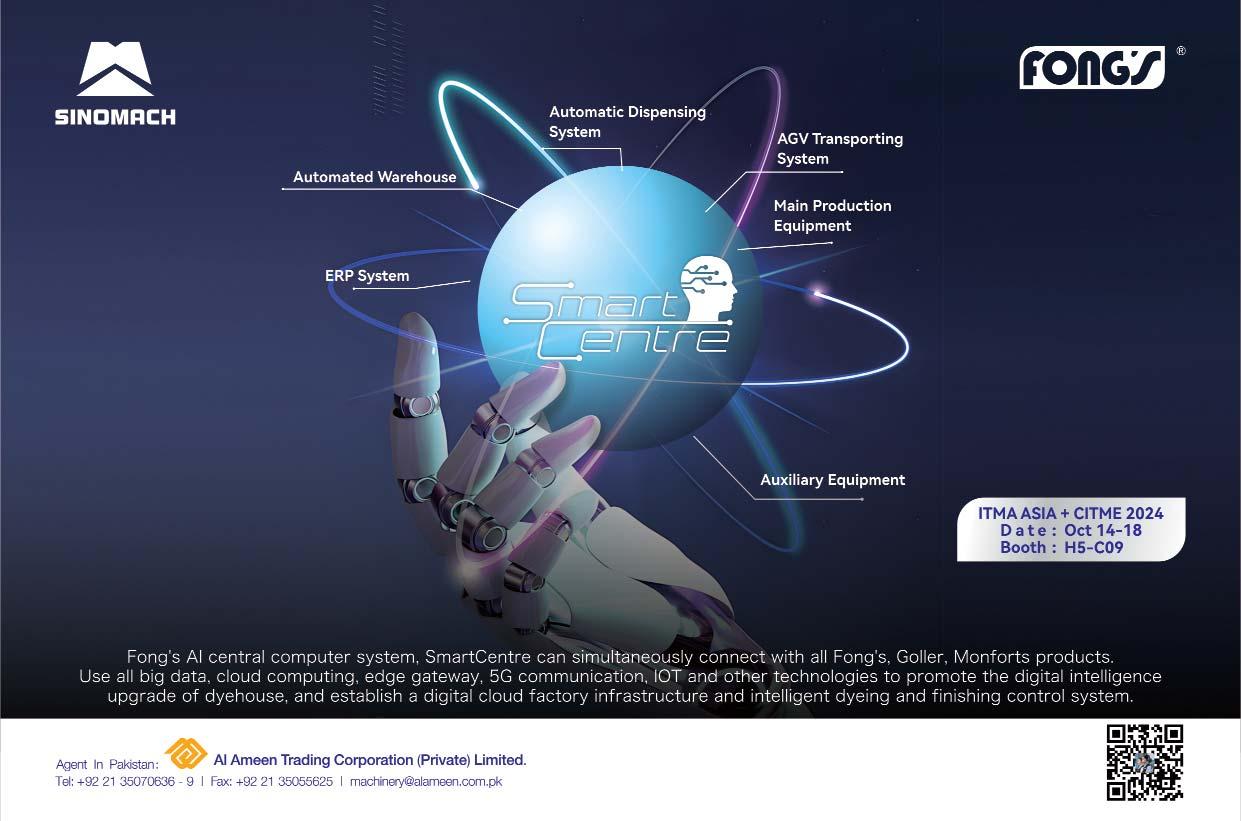
Notable Pakistani textile firms that have moved or expanded their operations to Bangladesh include Soorty Enterprises, which invested $35 million to establish a garment factory employing around 6,000 Bangladeshis. Other major names include Interloop Limited, Pak Denim Limited, Crescent Textile Mills, Gul Ahmed Textile Mills, Kohinoor Textile Mills, Al-Karam Textile Mills, Nishat Mills Limited, Artistic Milliners, and Masood Textile Mills.
The decision to relocate was influenced by Bangladesh’s strategic advantages, including lower labor costs and favorable trade agreements with the European Union and the United States. These agreements provide Bangladesh with better market access and lower tariffs compared to Pakistan. Despite Pakistan’s GSP+ status from the European Union since 2013, Bangladesh’s incentives have made it an attractive destination for Pakistani textile firms seeking to maximize profits and expand market reach.
Balwani, a textile industry leader, shared concerns about the reception of Pakistani firms in Bangladesh under the long tenure of Prime Minister Hasina Wajid, whose policies were perceived as pro-India. With the recent political upheaval, there is hope that a new military government may respect antiIndian sentiments, potentially fostering a more welcoming environment for Pakistani investors.
MI Khurram, a leading exporter of knitwear and yarn, noted that the high costs of power and energy in Pakistan make it challenging for textile mills to operate domestically. He suggested that if relations between Pakistan and Bangladesh improve post-military takeover, many mills might prefer to relocate their operations to Bangladesh.
Historically, smaller Pakistani textile units relocated to Bangladesh around 15 years ago but faced challenges due to unfavorable public opinion and government policies that favored Indian interests. Larger enterprises, however, have invested in export processing zones with better planning. Despite this, the cumulative investment of Pakistani textile entrepreneurs remains significantly lower than that of Bangladesh’s top local textile groups.
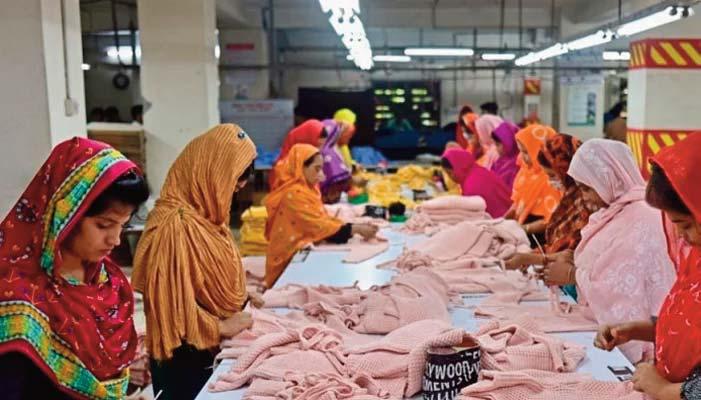
Textile and clothing exports in Pakistan saw a modest growth of just 0.93% in FY24, highlighting the challenges the sector faces in staying competitive with regional rivals. The implementation of stringent taxation measures during the current fiscal year appears to be a key factor hampering growth.
The impact of soaring energy costs has also been significant, with export figures for June 2024 reflecting a 3.91% decline compared to the previous year, according to data released by the Pakistan Bureau of Statistics.
Gohar Ejaz, a former commerce minister, expressed concerns over the stagnant state of textile and clothing exports, despite the sector having a $25 billion installed capacity. He pointed out that export levels have remained unchanged over the past two years, underscoring the need for government intervention. According to Ejaz, offering competitive energy rates, tax incentives, and timely sales tax refunds are essential steps to boost the country's export performance.
The outlook for 2024-25 remains uncertain, with further taxation measures potentially impacting the sector's performance. In absolute terms, textile and clothing exports reached $16.55 billion in FY24, slightly up from $16.50 billion in the previous year.
In June alone, export proceeds dropped to $1.41 billion, a decrease of 3.91% from $1.47 billion in the same
month last year. On a month-to-month basis, exports fell by 9.23%.
The government's decision to increase the tax rate on exporters' personal income in 2024-25 may further strain the sector, with the full impact of these measures likely to become apparent in the coming months.
The PBS data also revealed mixed performance across different product categories. Exports of readymade garments increased by 2.05% in value and 1.99% in quantity in FY24, while knitwear saw a slight decline of 0.66% in value but a significant 41.44% increase in quantity. Bedwear exports grew by 4.12% in value and 15.27% in quantity, and towel exports rose by 5.55% in value and 14% in quantity. However, cotton cloth exports fell by 7.72% in value despite a 16.15% rise in quantity.
Additionally, the import of textile machinery plummeted by 54.52% in FY24, indicating that expansion or modernization efforts are not currently a priority for the industry.
Pakistan's textile and leather industry has raised alarms over escalating electricity tariffs, unsustainable taxation, and a growing liquidity crunch, citing these as major obstacles to boosting exports.
In a virtual meeting held earlier with Commerce Minister Jam Kamal Khan and his team, representatives from the textile
sector voiced their concerns. The meeting included members of the Council for Apparel, Made-ups, and Technical Textiles, as well as other councils representing Textile Fibers, Yarns, and Fabrics, with a shared focus on critical issues plaguing this key economic sector.
Industry representatives highlighted a range of challenges, including high energy costs, complex taxation policies, liquidity shortages, and difficulties related to Statutory Regulatory Orders (SROs). They also pointed to the limited availability of export financing and high borrowing costs as barriers to maintaining export momentum. The participants urged the government to address these concerns urgently, stressing the importance of removing these obstacles to keep the sector competitive on a global scale.
The discussions also emphasized the need for supporting small and medium enterprises (SMEs) and establishing new plug-and-play garment cities, which are seen as vital for the industry's growth.
Council members stressed that Pakistan has a unique opportunity to capture a larger share of the international market, especially given the current geopolitical climate. They called on the government to implement policies that would enhance the country's valueadded textile exports.
Commerce Minister Jam Kamal acknowledged the industry's concerns, emphasizing the need to streamline the sector to enhance global competitiveness and boost exports. He recognized Pakistan's status as one of the few countries with a complete textile and apparel value chain, underscoring the sector's contribution to the country's socioeconomic development.
The minister assured the council members that their issues would be brought to the attention of the highest levels of government. He also committed to reviewing the recommendations from the 16 sectoral councils, highlighting the importance of private sector representation in these discussions.
"The prime minister is continuously exploring ways to facilitate exporters and increase trade volume," said the minister. He praised the private sector's input, noting that it would play a crucial role in shaping future policies. The

recommendations from these meetings will be compiled and presented to the National Export Development Board (NEDB) for final consideration by the prime minister.
In a related development, Jam Kamal Khan also met with the Pakistan Leather and Footwear Council, marking the first time a federal minister has actively engaged with this sector's council. He encouraged the council and the other 15 sectoral councils to submit their proposals and recommendations, which will be reviewed by the National Export Development Fund, chaired by the Prime Minister, for consideration and approval.
Surge by 13% in August 2024
In August 2024, Pakistan’s textile sector demonstrated a strong resurgence, with exports increasing by 13% to $1.64 billion compared to $1.45 billion in August 2023, according to the Pakistan Bureau of Statistics (PBS). This marked the first rise in three months, following export declines in June and July. Compared to July 2024, August's textile exports saw a notable 29.4% increase.
Within the sector, ready-made garments were the standout category, recording an impressive 28% growth. Other major textile components also saw growth: cotton cloth exports increased by 14% to $182.5 million, knitwear by 15.4% to $462.9 million, bedwear by 15.2% to $290.45 million, and towels by 15.7% to $100.67 million. Ready-made garment exports also climbed by 27.8%, reaching $363 million compared to the previous year.
However, there was a notable decline in exports of unfinished products like cotton yarn and raw cotton, signalling a strategic shift within the industry. Cotton yarn exports fell by 47.7%, down to $54.8 million, while raw cotton exports dropped to zero, indicating a growing focus on using these materials domestically to produce higher-value finished products.
For the fiscal year 2023-24 (JulyJune), total textile exports posted a modest 0.9% year-on-year increase, reaching $16.65 billion. This highlights the resilience of Pakistan's textile sector despite earlier challenges.


The Bangladesh Garment Manufacturers and Exporters Association (BGMEA) has called on ready-made garment (RMG) factory owners to ensure timely wage payments to workers in response to recent unrest in the sector. Protests by garment workers demanding better wages and improved working conditions have disrupted operations in several factories, escalating tensions within the industry.
BGMEA President Faruque Hassan stressed the critical role of the garment sector in Bangladesh’s economy, which employs over 4 million workers and contributes more than 80% to the country’s export earnings. Hassan highlighted those delays in wage payments not only breach labor laws but also exacerbate worker dissatisfaction, potentially damaging the global reputation of Bangladesh’s garment industry.
The BGMEA has urged factory owners to comply with labor rights and enhance communication with workers to address grievances effectively. Timely and fair compensation is crucial for maintaining a motivated and productive workforce, especially as international scrutiny over labor practices intensifies.
To support factory owners, BGMEA has suggested discussions with the government to explore financial
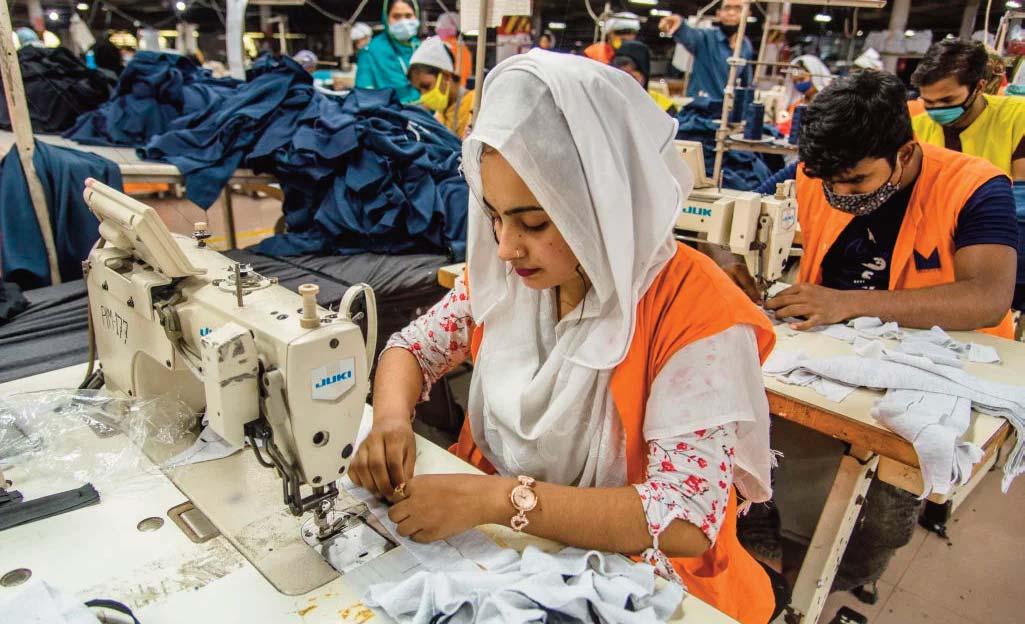
assistance or policy adjustments to alleviate the financial pressures on factories facing rising production costs and fluctuating global demand.
This appeal underscores the need for a unified effort from all stakeholders to protect worker welfare and sustain the growth of Bangladesh’s RMG sector in a highly competitive global market.

Wage negotiations for Cambodia’s garment sector have commenced, bringing together government officials,

labor unions, and industry employers to determine the minimum wage for 2025. This process is pivotal for the sector, which employs over 700,000 workers and is a major contributor to Cambodia’s economy, generating substantial export revenue annually.
The discussions come in response to increasing living costs and worker demands for higher wages. Currently, the minimum wage for garment workers is set at $200 per month, following a $6 increase in 2024. Labor unions are advocating for a more substantial wage increase, citing inflation and the need to improve living standards as key factors. They argue that the current wage is insufficient to meet the rising costs of food, housing, and healthcare.
Conversely, garment manufacturers and industry representatives express concerns about the impact of significant wage increases on their competitiveness. They highlight challenges such as fluctuating global demand, rising raw material costs, and the importance of maintaining Cambodia’s status as a lowcost manufacturing hub. Employers are calling for a balanced approach that considers both the industry’s financial health and workers’ needs.
The government is working to mediate between these competing interests, aiming to find a consensus that addresses both worker demands and industry sustainability. The outcome of these negotiations will be closely monitored, as it will influence labor relations and economic stability in Cambodia’s garment sector. A final decision is anticipated by the end of the
year, with any changes set to take effect in January 2025.

In the first seven months of 2024, China’s textile and garment exports exhibited a modest yet notable growth, reaching $186.25 billion. This represents a 1.1% year-on-year increase. Specifically, textile exports rose by 3.7% to $88.54 billion, while garment exports experienced a slight decline of 1.2%, totalling $97.71 billion.
This growth occurs despite facing global challenges such as inflation, geopolitical tensions, and a slowdown in demand from key markets. The data underscores the resilience of China's textile sector, which remains a crucial component of the country's trade portfolio. The decline in garment exports may reflect changing global consumption patterns and intensified competition from other manufacturing regions.
China’s textile and garment industry continues to be a vital player in the global supply chain, though it is under increasing pressure to adapt to evolving market dynamics and sustainability demands. The increase in textile exports suggests persistent global demand for Chinese textiles, driven by the need for raw materials and semi-finished goods. As the industry navigates these challenges, its ability to sustain even

modest growth highlights its strategic importance to China’s overall economic performance.
These figures also point to the necessity for the industry to innovate and diversify to maintain its competitive edge in a complex and shifting global market.

Germany’s economy has contracted by 0.3% in the second quarter of 2024, marking the second consecutive quarter of negative growth. This persistent downturn highlights the challenges facing Europe’s largest economy, including sluggish industrial performance, high inflation, and weakened export demand.
The GDP decline is primarily due to a slowdown in the manufacturing sector, adversely affected by rising energy costs and ongoing supply chain disruptions. Key industries such as automotive and machinery have reported reduced production outputs, with industrial orders falling by 1.7% from the previous quarter. Additionally, global economic uncertainties and tightening monetary policies have further strained exportdependent sectors, diminishing Germany’s competitiveness internationally.
Consumer spending, a vital component of the economy, has remained subdued. Persistent inflation has eroded household purchasing power, leading to cautious spending despite a slight decrease in inflation rates compared to earlier in the year. The cost of living continues to be a significant concern for German consumers.

The construction sector has also experienced a slowdown, contracting by 2.5% due to higher interest rates and increased material costs, leading to a reduction in investment in construction and infrastructure projects.
Economic analysts caution that Germany may face a prolonged period of stagnation if these trends persist. There are calls for the German government to implement supportive fiscal measures, such as investment incentives and relief for energy-intensive industries, to stimulate economic activity and prevent a deeper recession in the upcoming quarters.

An international textile exhibition is currently underway in Tehran, featuring over 290 domestic and foreign companies from 13 countries. The event, known as the Iran International Textile Industry Exhibition (IRANTEX), provides a platform for showcasing industry advancements, exploring investment opportunities, and discussing business and trade prospects.
Among the exhibitors, 170 are from Iran, and 120 represent international entities from countries including Germany, Italy, Taiwan, Uzbekistan, Tajikistan, South Korea, Turkey, Pakistan, Austria, Switzerland, India, Japan, and China. Notably, three of the world's top textile and apparel exporting nations— China, India, and Turkey—are

prominently featured, with 100, 18, and 12 companies respectively participating.
Iran’s textile industry benefits from several inherent advantages, including easy access to raw materials. The country produces 50 percent of its cotton domestically, a significant decrease from full self-sufficiency two decades ago. Additionally, Iran supplies over 50 percent of its silk needs from local production, with potential for complete selfsufficiency through targeted support and planning.
The nation’s abundant oil and gas resources bolster its production of synthetic fibers, further strengthening the textile sector. Iran’s domestic market, with a population of 85 million and a turnover of $30 billion, serves as a key driver for the industry. The neighboring Central Asia and Caucasus region, with a combined population of 400 million, also represents a significant market opportunity.
Iran’s textile history spans at least 10,000 years, with its ancient Persian textiles and carpets renowned for their intricate designs and vibrant colors.
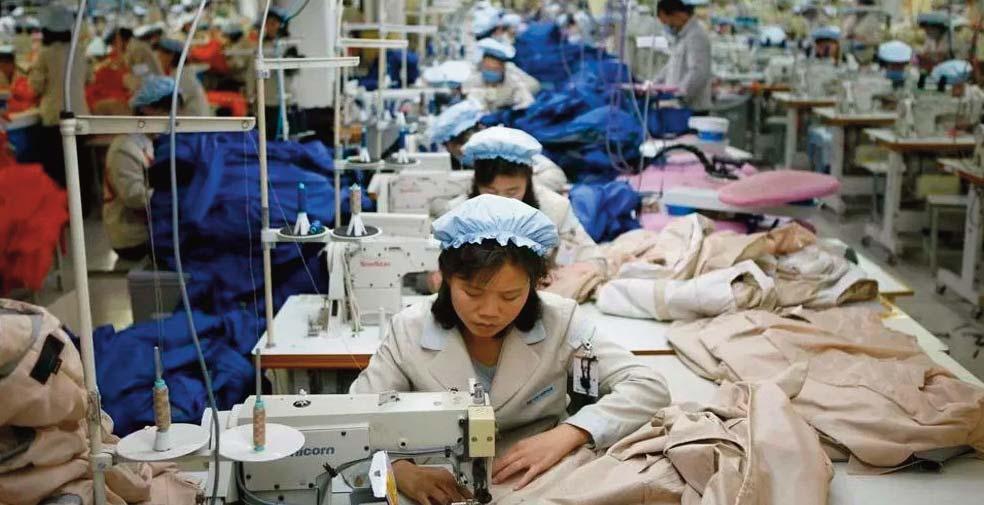
However, over the past three decades, the industry has struggled, with its contribution to the country’s GDP dropping from 6.4 percent to under 1 percent, largely due to the influx of imported goods, both legal and illegal.

South Korea has unveiled an extensive plan to elevate its textile and fashion sector with the launch of the Textile and Fashion Industry Competitiveness Strategy. This initiative aims to significantly enhance Korea’s global market share in industrial and ecofriendly textiles from the current 2-3% to 10% by 2030, and to increase digital transformation levels from 35% to 60%.
The strategy emphasizes technological advancements in highperformance materials such as aramids, carbon fibers, and electronic textiles. To support this, a substantial fund of KRW 2.9 trillion will be allocated to assist companies in integrating industrial textiles into their products. The plan also includes the establishment of an Industrial Textile Alliance and a Tech Textile Product Certification Evaluation Support Center.
Addressing environmental sustainability, the strategy involves an investment of 31 billion in initiatives like fiber-to-fiber recycling, plant-based vegan leather, and biodegradable fibers. Over 200 SMEs will benefit from waste heat recovery facilities, and new carbon emissions standards along with ecodesign guidelines will be implemented.
In terms of digital transformation, the strategy sets ambitious goals including reducing product design times by over 80% and developing a Connected Micro Factory for agile production. Automation facilities will be provided to more than 250 companies by 2028, and the expansion of Meta Fashion Playgrounds is also on the agenda. Furthermore, the plan includes training 1,000 professionals in eco-friendly and digital technologies by 2028 and pursuing global sustainability certifications.

In the first half of 2024, the United States saw a 3.17 percent drop in textile and clothing exports, totaling $11.5 billion. This decrease continues a trend that began in the first quarter and accelerated throughout 2023, reflecting ongoing challenges in the global market. Imports have also decreased, driven by persistent inflationary pressures.
Mexico and Canada remain the leading destinations for American textile and clothing exports, purchasing $6.1 billion and $4.2 billion worth of goods, respectively. The European Union, however, faced a significant 11.2 percent drop in apparel consumption, with orders totaling $1.2 billion, as inflation continued to affect its market.
Other notable markets include Honduras and China, each maintaining a steady order volume of $361 million. These figures place them ahead of the Dominican Republic, the UK, and Japan in terms of market size.
On the import side, the US experienced a 3.58 percent decline in textile and apparel imports, totaling $49.3 billion during the first half of the year. This contraction, largely attributed to inflation, has raised concerns among consumers and brands, despite signs of a slowdown since July. China remains the largest supplier with $11.1 billion worth of goods, followed by Vietnam ($7.2 billion), India ($4.7 billion), and Bangladesh ($3.5 billion), which saw a 10.6 percent decline.
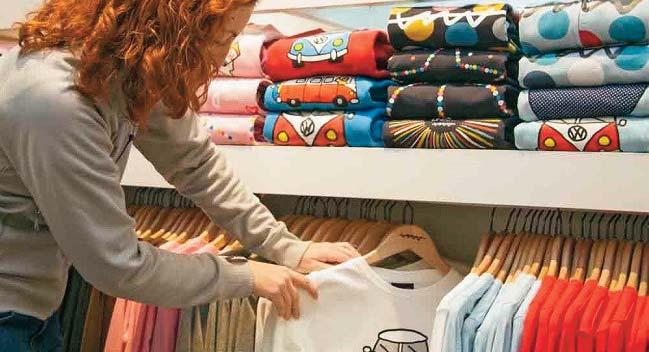
The European Union ranks fifth among suppliers with $2.8 billion in imports, reflecting a 2.9 percent drop. It is followed by Indonesia, Mexico, Cambodia, and Pakistan.
These developments are set against the backdrop of a 22 percent decline in US garment imports observed in 2023, which somewhat excluded European luxury products. Additionally, rising freight prices are affecting trade levels. Lower water levels in the Panama Canal have increased transportation costs and transit times between Asia and the American East Coast, while security concerns around the Suez Canal have further driven up container rates.

In the first half of 2024, Uzbekistan’s textile exports totaled $1.5 billion across 55 countries, reflecting a 5.3% decrease compared to the same period last year, according to official data. The export portfolio primarily included finished products, which made up 38.1% of the total, and yarn, which accounted for 46.2%.
Yarn exports notably rose to $708.6 million, up from $658 million in the previous year. However, the value of finished textile products fell to $584 million, down from $662.6 million in 2023. Exports of knitted fabrics decreased to $114.1 million from $173.9 million, while fabric exports declined to $75.1 million from $92.2 million. Sock exports also saw a reduction, totaling $20.5
million compared to $31.4 million last year, as reported by domestic media.
While the overall export figures reflect a downturn, the increase in yarn exports signifies a bright spot in Uzbekistan’s textile industry, pointing to a sector with ongoing potential for growth.

Vietnamese textile exporters are facing severe financial strain as shipping costs for their goods have surged by up to 20%. This significant increase in shipping expenses is severely impacting profit margins, with reports indicating a reduction of up to 30% in profitability across the industry.
The sharp rise in shipping costs is not only eroding profits but also leading to a noticeable drop in new order volumes. Some exporters have experienced a decline of up to 15% in the number of new orders, exacerbating the financial pressures on the sector.
In response to these challenges, some companies are exploring alternative shipping routes and negotiating with logistics providers to secure better rates. Despite these efforts, the rising shipping costs present a formidable obstacle for the Vietnamese textile industry, which is heavily dependent on exports.
This situation highlights the growing financial pressures faced by exporters as they navigate an increasingly volatile global shipping environment, striving to maintain their competitive position in the international market.


eVent Fabrics® prepares for a PFASfree future, offers eVent BIO and eVent
With pending legislation and changing consumer sentiment, eVent is positioned to deliver performance without PFAS “forever chemicals”

eVent Fabrics, a global leader in waterproof and breathable technologies, is looking to the future and offering their partner brands eVent BIO and eVent alpineST technologies. Both are made without PFAS and are compliant with regulations requiring the removal of PFAS chemicals from many consumer products.
As the European Union and a growing list of US states phase out PFAS, eVent is uniquely positioned to offer a high level of breathable waterproof performance that will comply with new regulations.
“We look at sustainability as a journey, more than a destination,” said Chad Kelly, President of eVent Fabrics. “We continuously pursue the most sustainable options possible while ensuring our laminate fabric technologies deliver the high level of performance our customers demand. We are proud to report that eVent BIO and alpineSTboth made without the use of PFASaccomplish exactly that.”
PFAS-compliant eVent BIO and alpineST both provide long-lasting solutions for demanding apparel, footwear, and accessory applications.
eVent BIO is a bio-based membrane technology that uses sustainable materials to provide the all-weather protection and performance users have come to expect from eVent fabrics. At the
laminate technology’s core are highly renewable plant-based and biomass elements paired with smartly-sourced or recycled face and backer fabrics. Light, tough and flexible, eVent BIO has a reduced carbon footprint and is recyclable when it reaches the end of its lifecycle.
alpineST is a sustainable alternative to ePTFE products that provides first-rate waterproofness, breathability, and protection in the harshest environments. Created with the planet in mind, alpineST products are built around a fluorine-free membrane laminated to recycled face fabrics. With an initial waterproofness of 25K, alpineST maintains a water column of 20K after dozens of washes.
eVent Fabrics offers a full range of PFAS-free laminate options for apparel,
footwear and accessories to help ensure trusted performance in the field and compatibility with global textile recycling standards. All laminate materials are smartly sourced and feature a C0 DWR finish.
eVent® Fabrics, founded in 1999, revolutionized the industry with the first air-permeable 100% waterproof membrane and continues to innovate with sustainable, high-performance textiles. The company is globally recognized for its breathable waterproof solutions and commitment to reliable, high-performance laminates. Trusted by leading brands, eVent® Fabrics sets the standard for performance and sustainability in outerwear, footwear, and accessories.



Despite the many difficulties of sorting and recycling of post-consumer waste textiles, fibre blends are an indispensable facet of today’s market, and their use may actually increase going forward.
This was one of the key takeaways from the ITMAconnect Sustainability and Circularity webinar of the Innovator Xchange Virtual Edition series. The webinar was chaired by Karla Magruder, founder and president of Accelerating Circularity, the organisation working with multiple companies to drive forward the industry’s transition to textile-to-textile circular systems.
That blends don’t cause difficulties in recycling was disputed by Annabelle Hutter, managing director of Säntis Textiles. She said that they caused significant problems on her company’s proprietary RCO 100 system for the production of high-quality recycled cotton and questioned whether they need to be used to the extent that they currently are.
“In fashion, complex blends can sometimes be unnecessary, and we are working extensively with designers to make them aware of the problems they
cause,” she said. “Often blends can be avoided and it’s about making conscious decisions at the design stage.”
Alan Hudd, founder and CEO at digital dyeing company Alchemie Technology said recyclers and dyeing and finishing companies faced similar difficulties.
“Blends certainly make things more complicated for us too,” he said. “All parameters have a big impact on the quality of coloration and the devil is in the detail. Variability is huge in terms of physical and chemical properties in dyeing, and these properties are changed again in recycled fibres. There is in any case, no such thing as a single polyester and the dye properties change from one fibre to another.”
Jean-Francois Gryspeert, sales and business developer for Belgian sorting and baling technology specialist Valvan, observed that for the textile waste sorter, blends extended to accessories such as buttons, zippers, pocket linings and stitching, which all have to be separated from mixed bales of waste, but working out the percentage of polycotton with NIR (near infrared) technology was relatively easy.
Valvan is currently involved in a major project in the Prato region of Italy
involving a supply chain-wide push to establish circular textile manufacturing.
In defence of blends, Toby Moss, business development director at Worn Again Technologies, representing EuRIC, the largest industry association of waste and recycling companies in the EU, compared restricting manufacturers to single fibres to asking the art world to only use the colour blue.
“Blends provide a fantastic complexity and wide functionality that we wouldn’t have with a single fibre, or a single dye or finish,” he said. “Today there are seventeen different fibres used in making clothing, some of them natural, but most synthetic, and the synthetics are growing in popularity because they can provide both cost efficiency and functional properties that natural fibres can’t.
“We should be very cautious about saying that the fibres we’ve got today are the best ones or that any single one of them should be chosen to be used exclusively for making clothing. That could send us down a relatively dangerous path in terms of both sustainability and the cost of clothing, which is really important, especially for people in the developing world.”
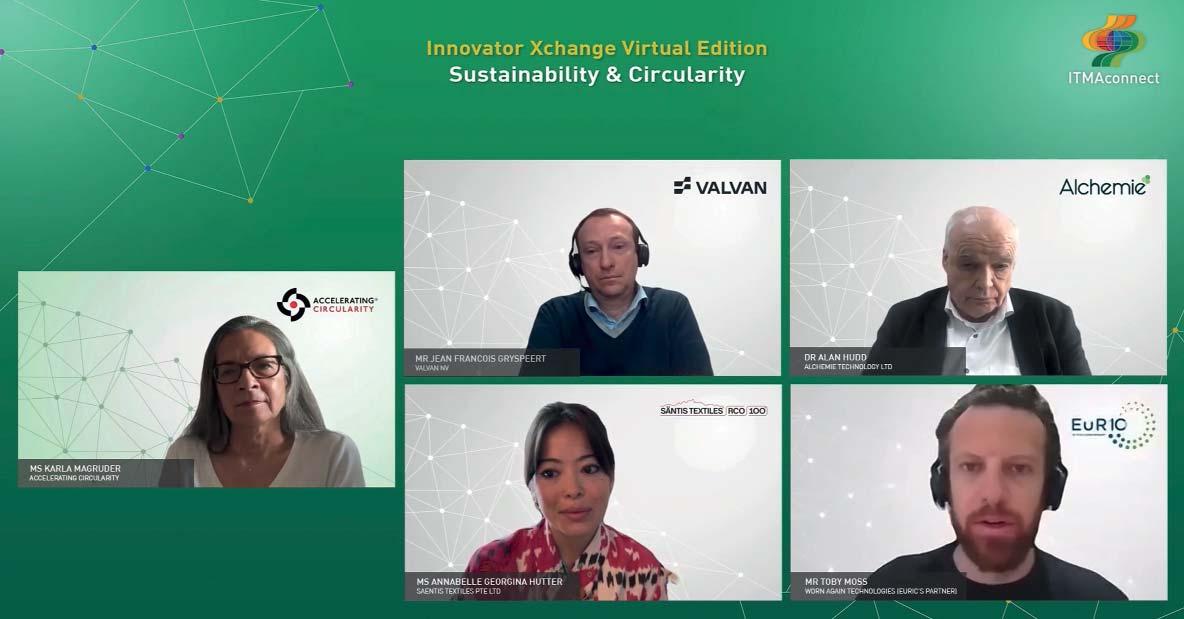
He cited the example of the workwear industry’s reliance on polycotton blends which are crucial in providing a range of necessary functions with the durability and cost efficiency that pure cotton or pure polyester can’t.
“We need to live with the fact that these blends are going to be with us and get even more complex,” Moss said. “Our job as recycling innovators is to create better solutions so that we can deal with that complexity. At Worn Again our core technologies are about polycotton recycling, but we’re not stopping there. ”
Price levelling
In looking at the broader picture, Jean-Francois Gryspeert observed that the European Union’s ban on the landfilling or incineration of textile waste from January 2025 will oblige the major brands to put their waste feedstocks on the market and this should go some way to levelling up the price difference between virgin and recycled fibres.
“There is so much additional processing involved in recycling fibres which means they are currently much more expensive than either virgin cotton or synthetics, which both have longestablished and cost maximised manufacturing chains,” he said. “The introduction of the extended producer responsibility (EPR) scheme by the EU will introduce fees to help organise the
structure for economical recycling and lower its processing costs as the European recycling industry scales up to meet these new regulatory measures.”
Encouraging legislation
Alan Hudd welcomed the upcoming EU legislation but said that when European governments talked about getting to net zero they were often only looking at their own countries and in this respect were adopting something of a NIMBY – Not In My Backyard – attitude to the problems created by the globalised textile industry.
“We would encourage legislation, and more of it, and especially to stop or to tax the products that we are importing
that are causing a lot of pollution somewhere else in the world,” he said. “But bringing about the changes necessary to become a cleantech industry has to be supported by serious investment. We need to be investing US$20 billion every year for the next ten years and that investment needs to be coming from both brands and governments. Realistically, it needs governments to come together because the only way this can really be done is on a global stage with global policies.”
A recording of the webinar is available on ITMAconnect on-demand for subscribers. If you are not a subscriber, register for an ITMAconnect visitor account now for just Euro 25 (plus applicable VAT).

The circulartech company reshaping the traditional textile-to-textile paradigm brings home its first accolade.

RE&UP Recycling Technologies, a leading innovator in scalable recycling solutions for Next-Gen fibers, proudly announced its recognition as one of the winners of the prestigious ITMF Startup Award 2024. This esteemed accolade highlights RE&UP's commitment to advancing more sustainable practices in the textile industry through groundbreaking recycling technologies.
The ITMF Start-up Award, presented annually by the International Textile Manufacturers Federation (ITMF), aims to honor start-ups that showcase innovative and transformative ideas poised to make a significant impact on the textile sector. This year’s award ceremony was held during the ITMF & IAF Conference 2024 from September 8-10 in Samarkand, Uzbekistan, co-hosted by the Uzbek Textile & Apparel Industry Association (UZTS).
"We are incredibly honored to be recognized by the ITMF with this award," said Andreas Dorner, General Manager of RE&UP. "Our mission is to revolutionize
the textile-to-textile recycling paradigm by making it more efficient, scalable, and accessible. This award validates our efforts and commitment to the cause and the industry.”
As one of the four winners of the ITMF Start-up Award 2024, along with Sci-Lume Labs, Sycoretec CAS, Syre Impact, RE&UP received the opportunity to present its business model and technological advancements at the conference, where leaders from across the global textile value chain gathered. This platform enabled RE&UP to connect with established companies and explore collaborative opportunities to further integrate sustainable practices in textile manufacturing.
RE&UP is the circulartech company reshaping the traditional textile-to-textile paradigm. By producing Next-Gen Cotton and Next-Gen Polyester that maintain the same performance as virgin fibers, it brings sustainable solutions to

life, addressing the planet's most pressing challenges. Enriched by SANKO’s centenary knowledge in textile innovation, RE&UP creates a seamless circular ecosystem that transforms endof-life textile waste into high-quality raw materials at scale: a commitment to opening up a more responsible and technologically evolved future for textiles and fashion.


Sleep is essential for our well-being, yet temperature fluctuations often disrupt our ability to fall and stay asleep, leading to restless nights. The solution? Outlast's temperature-regulating bedding fabrics and fibers. These advanced materials minimize heat peaks, ensuring you stay comfortable and maintain a stable microclimate all night long.
Outlast® Thermo-Technology was originally developed by NASA to protect astronauts from the extreme temperature fluctuations in outer space. Recognizing its potential, the founders of Outlast have dedicated themselves to making this innovative technology accessible for a variety of uses, including clothing, seating, medical equipment, footwear, safety and bedding. With a wide range of products, Outlast allows you to integrate this advanced technology into nearly any textile, significantly enhancing comfort and well-being.
The Heart of Outlast® ThermoTechnology: Microencapsulated Wax
At the core of all Outlast® ThermoTechnology products is micro encapsulated wax, typi-cally derived from rapeseed oil. This natural wax can change
its physical state—melting when warm and solidifying when cold—enabling temperature regulation in fabrics and fibers. It reacts to environmental or body temperature changes proactively, preventing you from starting to sweat. During these state changes, the temperature stabilizes, as thermal energy is absorbed or released to melt or solidify the wax. This process maintains the body's microclimate, keeping the user comfortable and within their thermal comfort zone.
Using products with Outlast® Thermo-Technology while sleeping helps maintain a stable micro-climate, reducing both heat peaks and freezing. Laboratory tests prove that this technology can reduce sweat production by up to 48%* and extend periods of deep sleep. It

Martin Bentz, CEO of Outlast®

creates an improved sleep setting and helps put an end to restless nights. People who suffer from sleep disorders can greatly benefit from temperatureregulating products, but everyone can use them to improve their quality of sleep. Help your customers sleep better by offering bedding fabrics and fibers from Outlast, providing additional value and functionality.
CEO Martin Bentz has been running the company successfully for over 20 years and remains enthusiastic about the technology: "I love the 'wow' effect when customers experi-ence Outlast® Thermo-Technology for the first time. The technology really speaks for itself, and we hardly have to do any convincing anymore."
Would you like to experience Outlast® Thermo-Technology firsthand? Visit booth no. S475 at the SLEEP Expo Middle East in Dubai and meet the team. Enhance your product offerings with superior performance by incorporating Outlast® Thermo-Technology!

CAITME, which took place from 11 to 14 September in Tashkent, Uzbekistan, saw a strong participation of VDMA member companies. About 25 VDMA members took part in the event. Among the numerous VDMA companies present at the trade fair with their own booth or through agents, 13 companies exhibited in the area of the official German Pavilion, organised by the German Federal Ministry for Economic Affairs and Climate Action and initiated by VDMA: Brückner Textile Technologies, Erbatech, Georg Sahm, Groz-Beckert, Heusch, KARL MAYER STOLL Textilmaschinenfabrik, KURIS Spezialmaschinen, Lindauer DORNIER, Oerlikon Textile, Stäubli Bayreuth, STC Spinnzwirn, THIES, Xetma Vollenweider.
At CAITME, VDMA member companies showcased the most advanced technology for the textile sector. The exhibiting companies were at the forefront, especially in sustainability and digitisation of production processes.
With exports of textile machinery and accessories worth 85 million euros in 2023, Germany was once again the second biggest supplier to the Uzbek

textile sector, surpassed only by China. Uzbekistan is one of the largest producers and exporters of cotton. In the cotton sector, Uzbekistan already has a fully integrated production chain. Almost the entire cotton fibre is spun in the country. The Uzbek government has pushed ahead with extensive economic reforms in recent years. The textile industry is one of the top investment sectors in the manufacturing industry. Besides cotton spinning, the textile sector is enlarging its
capacities in the downstream production steps of the textile chain, such as fabric making, finishing and dyeing.
Dr. Harald Weber, Managing Director of the VDMA Textile Machinery Association, stated: “To compete globally in the textile industry, companies must prioritise technology updates. CAITME is a perfect platform to intensify the collaboration between our industry and the Uzbek textile sector and to set up new contacts.”

“Planet Conscious” approach to color from inspiration to execution
Archroma, a global leader in specialty chemicals towards sustainable solutions, today introduced COLOR MANAGEMENT+, an enhanced color design and development solution that helps textile and fashion brands and mills work together for improved economic and environmental sustainability.
Archroma Color Management+ incorporates the industry’s largest off-theshelf color atlas selection, market-leading design tools and customized services for fast color selection and creation. It combines these with engineered color standards created with Archroma’s Super Systems+ for reduced environmental impact and consistent and accurate color reproduction.
With these end-to-end capabilities, brands and designers can focus on their color inspiration and on the required functionality and sustainability for their end article, with the assurance that their inspiration can be precisely communicated and efficiently executed at the mill.
“Selecting the perfect color is a vital part of the creation of textiles and fashion, but it is not simple. Beyond aesthetics and consumer appeal, today’s designers also have to consider fastness performance, eco-compliance, color consistency and resource efficiency,” Chris Hipps, Global Head of Archroma Color Management, said. “Archroma’s COLOR MANAGEMENT+ builds these considerations into engineered color standards and provides the recipes and references that colorists and technical specialists need to bring colors to life in economical and resource efficient bulk production.”

Within Color Management+, the Color Atlas by Archroma® offers access to a collection of more than 5,700 unique colors for cotton, polyester and blends, both as a physical library and searchable online library. Designers also have the option to create custom colors.
Most importantly, achievability criteria are available for each color standard, whether in the Color Atlas or provided as an Engineered Color, at the selection phase. This includes information about the technical and economic feasibility of the selected color, along with a commitment to sustainability build on the foundation of the Zero Discharge of Hazardous Chemicals (ZDHC)
Manufacturing Restricted Substances List (MRSL) Level 3.
The COLOR MANAGEMENT+ color standards provide clear color communication to mill colorists, textile technologists and quality control specialists, helping them deliver the right color faster and achieving reproducible colors across countries and mills. Clear communications can also eliminate excessive lab dipping, shorten approval times and improve first-time-approval rates.
The color standards in COLOR MANAGEMENT+ are created with Archroma’s powerful Super Systems+ solutions for bulk production in mind. Offering end article-specific processing solutions, durable colors and intelligent effects, the Super Systems+ suite allows brands to achieve measurable environmental impact, eliminate harmful or regulated chemicals, and add value and longevity to the end product.
The solution is further supported Archroma’s ONE WAY+ Impact Calculator and Sustainability Improvement Program (SIP), and SAFE EDGE+ compliance-data platform. Global technical support is provided to help the supply chain deliver the right colors with consistency and reduced environmental impact.
Archroma’s COLOR MANAGEMENT+ is a core pillar of the company’s “Planet Conscious+” vision. With the industry’s most extensive product portfolio and a comprehensive global footprint, Archroma has the expertise and drive to accelerate the textile and fashion industry’s transition to the most sustainable processes and lead it towards a more sustainable future.

DyStar, a leading specialty chemical company with a heritage of more than a century in product development and innovation, has published its Integrated Sustainability Report for FY2023/24. For the past 14 years, DyStar has formally reported on its sustainability performance in accordance with the Global Reporting Initiative (GRI) Standards. This report also adopts the Integrated Reporting <IR> framework, which outlines the company’s environmental, social, and governance (ESG) practices through the lens of six major capitals.
Despite a year of change, DyStar has remained resilient in its commitment to Sustainability.
Mr. Xu Yalin, Managing Director and President of DyStar Group said, “In FY2023, DyStar capitalized on growth momentum and embraced strategic changes. We are pleased to report, DyStar is on track to meet our 2025 targets. Today, DyStar remains committed to enhancing our environmental performance and seeking innovative solutions to address future challenges,
thereby creating long-term value for all our stakeholders and the global supply chain.”
DyStar has successfully demonstrated the effectiveness of its strategy in the latest report. For instance, our efforts in implementing energy-efficient initiatives across its operations have started to yield credible results. DyStar’s Scope 1 and Scope 2 emissions totaled 42,084 tCO2e, representing a 67% decrease from 2011’s baseline year and a 26% decrease compared to FY2022. Scope 3 accounted for 8.2% of DyStar’s total emissions profile, with over 80% primarily stemming from the transportation of goods and services.
In terms of energy management, the Group has increased its use of renewable energy by 20%. Additionally, several energy conservation initiatives have been implemented as part of a concerted effort to reduce energy consumption globally.
Operationally, there have been several improvements to procedures aimed at boosting water efficiency and achieving cost savings at all manufacturing sites.
Wastewater discharge was reduced by 37%, improving the intensity level to 8.04 m³ per ton of production compared to 8.71 m³ per ton the previous year. This improvement is also partially due to some of our sites operating under a “Zero Liquid Discharge Scheme” mandated by local authorities.
Key highlights of FY2023 include:
Participated at ITMA Milan, where DyStar introduced a new range of bio-based DyStar products, dyes and auxiliaries containing renewable feedstock, as well as the EcoAdvanced Indigo Dyeing process.
Recognition by the Institute of Public & Environmental Affairs (IPE), achieving second place on IPE’s Green Supply Chain Corporate Information Transparency Index (CITI).
Celebrating diversity and inclusivity through global campaigns.
As we move towards a low-carbon future, DyStar decarbonization strategy roadmap will be crucial in supporting DyStar’s efforts to improve productivity and optimize cost in the name of Sustainability.

bluesign and SCTI donate the pioneering Sustainable Chemistry Index (SCI) Methodology to ZDHC aiming to advance sustainable chemistry within the textile industry.
The textile industry is taking a great step forward in sustainable practices as bluesign and SCTI donate the pioneering Sustainable Chemistry Index (SCI) Methodology to ZDHC. This collaboration aims to revolutionize chemical management in the textile, leather and fashion industries, while addressing environmental impact in a holistic manner.
The Challenge of Harmful Chemicals in Fashion:
For decades, the use of hazardous chemicals in clothing has been a major challenge. Despite industry efforts with numerous overlapping standards and voluntary schemes - the textile, leather and fashion industries struggle with varying regulations, inconsistent data and a lack of common action. Inconsistent
regulations, limited transparency, and little coordinated action hinder progress, while consumers do not receive information about the overall environmental impact of these industries.
A Unified Effort for Sustainable Solutions:
Leading organizations in the textile sector are elevating the conversation to tackle these issues head-on with converging assessment tools.
SCTI, a group of innovative and pioneering chemical manufacturers, aims to bring positive change to the textile industry and make sustainable chemistry the norm. bluesign, a renowned sustainability solutions provider, has extensive experience in ensuring safe and responsible chemical management, environmental and worker safety as well as resource efficiency in the production of textiles. The ZDHC Foundation, driven by major fashion brands, is on a mission to detox the fashion industry by providing tools and guidelines for sustainable chemical management.
The Start of the Sustainable Chemistry Index (SCI):
In 2022, SCTI and bluesign announced the development of the first comprehensive Sustainable Chemistry Index (SCI) for the textile industry. The pioneering work leverages best available technologies, while transcending existing chemical assessments, and introduces a one-stop-shopping tool for a broader assessment of environmental impact. Such an approach was missing. Now, the SCI introduces a standard common language for convergence and alignment throughout global textile.
The SCI brings new parameters to assess how chemical products improve resource utilisation in the processes they are used along the life cycle of a garment. Key building blocks include supply chain transparency, responsible sourcing, feedstock reducing fossil dependency, product carbon footprint, resource
consumption, efficiency in use during textile production, end use impact and end-of-life of consumer applications. This transparent framework makes it easier for the industry to evaluate the sustainability impact of chemicals present in a garment and promote circularity.
A Collaborative Donation to Advance the Industry:
To advance and foster industry-wide collaboration, SCTI and bluesign are donating, the SCI to ZDHC as the cornerstone of its Chemicals to Zero (CTZ-A) program. CTZ-A represents the highest level of sustainable chemistry within ZDHC. In 2024, the SCI content will undergo ZDHC's stakeholder engagement and consultation processes, aiming to enhance the Roadmap to Zero Program by addressing sustainability and circularity. ZDHC will make the SCI content freely available to the public, enabling widespread adoption and impact.
Wolfgang Schumann, Managing Director of RUDOLF, Chairman of SCTI and ZDHC board member, stated, "We have been partnering with all stakeholders involved for some time and recognized that our market has been operating with multiple isolated approaches. Within SCI content, we are converging several approaches, while raising sustainable chemistry to the benefit of our community’
Daniel Rüfenacht, CEO of bluesign, said “As a contributor in the development of Sustainable Chemistry Index, we are glad to continue the journey we have started in 2022 with this initiative, and look forward to working with our partners to further move sustainability forward in our industry.”
Isabella Tonaco, SCTI Executive Director, added "Our initiative elevates collective action to new heights and enables the textile and fashion industries to make sustainable choices by taking full advantage of what solidarity can do to power change."
Frank Michel, ZDHC CEO, continued. “At ZDHC, our mission is to build a dynamic platform that highlights the transformative journey of sustainable chemistry in the fashion industry. By integrating the SCI as the cornerstone of Chemicals to Zero Aspirational Level and

releasing it into our publicly available ZDHC Framework, we’re showcasing true thought leadership essential for driving positive change and engage our wider community of stakeholders on our way forward.”
The ZDHC program is well-positioned to complement the expertise of bluesign and SCTI and to scale its impact within a multistakeholder structure. This collaboration empowers manufacturers and brands to make informed, responsible choices in terms of chemicals and processes, committing to sustainable chemistry and benefiting society.
Founded in October 2020, Sustainable Chemistry for the Textile Industry (SCTI) is an alliance of leading chemical companies that strives to empower the textile and leather industries to apply sustainable, state-ofthe-art chemistry solutions that protect factory workers, local communities, consumers and the environment. It has six founding members: Archroma, CHT Group, Kyung-In Synthetic Corporation (KISCO), Pulcra Chemicals, Rudolf and Tanatex Chemicals. In 2022, SCTI teamed up with bluesign to create the Sustainable Chemistry Index (SCI) that enables stakeholders to assess the sustainability of textile chemical products.
The bluesign® SYSTEM is the solution for sustainable textile production. It eliminates harmful substances right from the start of the manufacturing process,
and it sets and controls standards for environmentally friendly and safe production. This not only ensures that the final textile product meets very stringent consumer safety requirements worldwide but also gives consumers confidence in purchasing sustainable products. bluesign technologies ag was founded in 2000. Since then, the bluesign® SYSTEM has been adopted by worldwide leading textile and accessory manufacturers. Various significant key players in the chemical and machine industry rely on the bluesign® SYSTEM, and well-known brands in the outdoor, sportswear and fashion industry trust the extensive knowledge and services of bluesign.
The ZDHC Foundation leads the fashion industry in preventing hazardous chemicals from being used in fashion production. It unites over 300 Signatories and develops guidelines, platforms and solutions that empower brands, suppliers, and chemical formulators to implement safer and sustainable chemical management.
This enables large-scale change towards zero hazardous chemical discharge across complex global supply chains. By creating the collaborative Roadmap to Zero Programme and equipping the fashion ecosystem with solutions, ZDHC plays an instrumental role in advancing the industry towards responsible chemical use that protects people and the planet.
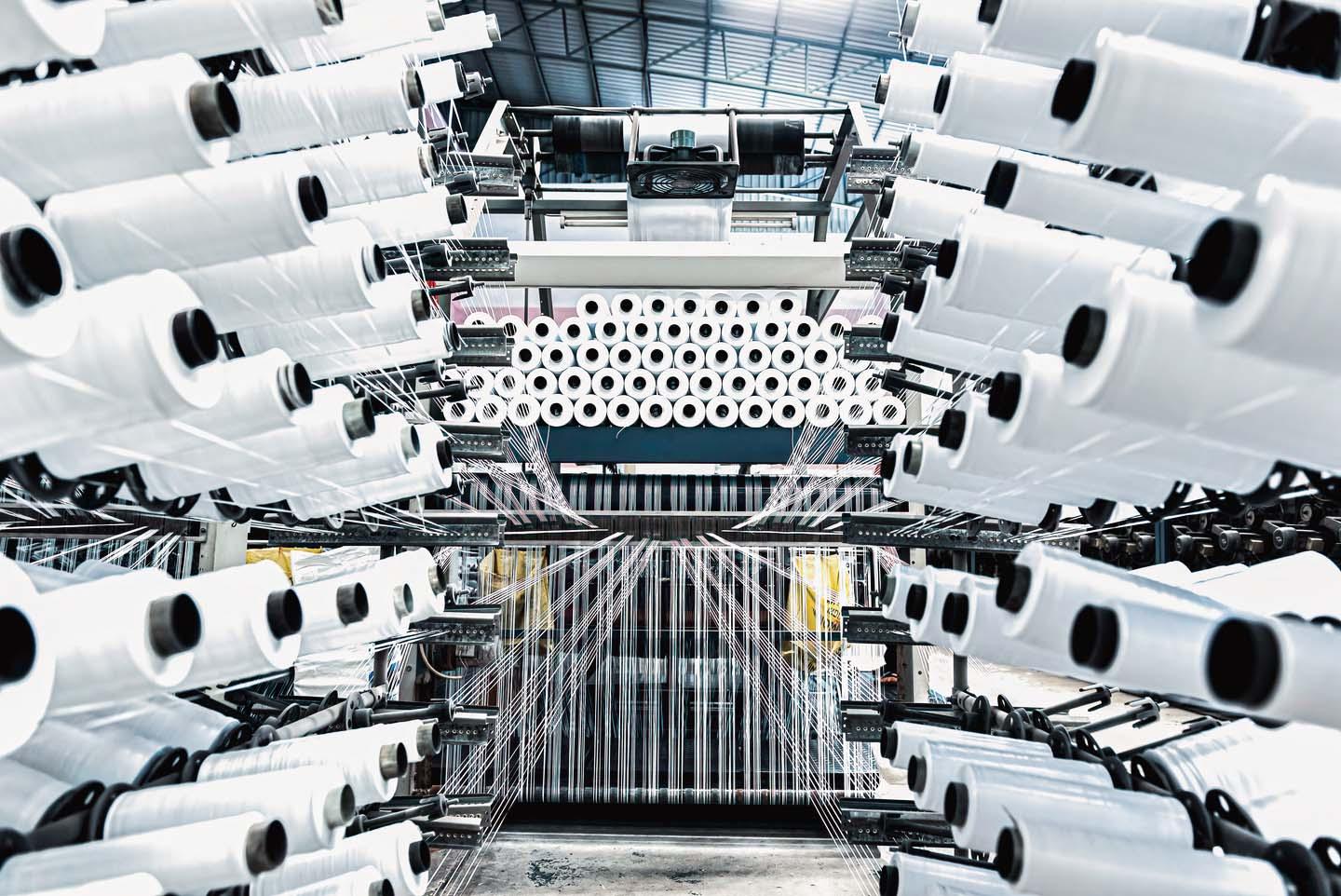
The Swiss Textile Machinery Association (Swissmem) is presenting special events in key markets worldwide. The next stop is Charlotte, N.C., where 16 association member companies will present their latest innovations at a one-day symposium on 1st October 2024
In global business, not even the latest communication systems can replace personal relationships. To members of the Swiss Textile Machinery Association, it’s vital making contact with customers old and new. “That’s what motivates our members to take their latest innovations
right into the biggest textile manufacturing markets — along with a friendly handshake,” said Cornelia Buchwalder, the association secretary general.
The Swiss Textile Machinery Association warmly invites textile professionals to a special symposium in the heart of the North American textile sector. A total of 16 association member firms will be on hand to answer any questions about the technology, the products and more. Participating companies are:
Autefa Solutions
Benninger
Bluesign Technologies
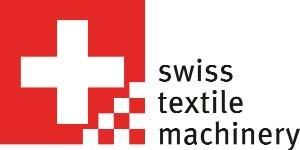
Bräcker
Heberlein Technology
Jakob Müller
Luwa Air Engineering
Maag Brothers
Retech
Rieter
Rotorcraft
Saurer
SSM – Schärer Schweiter Mettler
Stäubli
Xetma Vollenweider
North America is a well-chosen tour destination, because it has become an increasingly interesting market for Swiss textile machinery and component manufacturers, as well as service providers.
“North America has a large and diverse textile market, with a strong technical textiles sector, covering a vast range of applications. This means demand for advanced textile machinery is at a high level,” Buchwalder said.
The event will start with insights into the latest developments from the Switzerland-based companies, as the delegates showcase their innovations for the U.S. manufacturers. There will also be the chance for networking, at the exhibition tables and at a joint dinner for customers, representatives and guests. The free-ofcharge event takes place at the Charlotte Westin Hotel.
Please visitSwissmem’s website for further information and registration.
The host at the event will be Cornelia Buchwalder, secretary general, Swiss Textile Machinery Association (part of Swissmem). Ralf Heckner, Ambassador of Switzerland to the United States; Charles Poston, chairman, Southern Textile Association; and Ernesto Maurer, president, Swiss Textile Machinery, will also welcome the guests.
The Swiss Textile Machinery Association is the representative body for Switzerland’s producers of textile equipment, systems and services. Currently 45 companies are affiliated, including manufacturers of machines and components, and service providers, for the textile industry. The companies offer solutions covering the entire textile value chain, from spinning to weaving, knitting, finishing, embroidery and quality control.
Founded in 1940, Swiss Textile Machinery Association is the oldest industry sector of Swissmem.
Swissmem is the leading association for SMEs and large companies in Switzerland's mechanical and electrical

engineering (MEM) industries and related technology-oriented sectors. Swissmem enhances the competitiveness of its 1,200
or so member companies both at home and abroad by providing needs-based services.
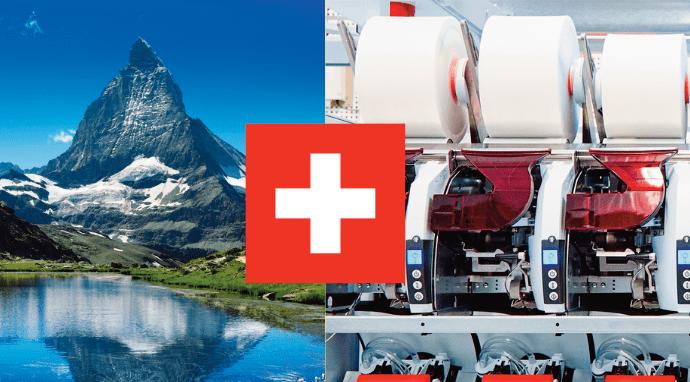
increasing number
The 13th JIAM 2024 OSAKA - Japan International Apparel & Non-Apparel Manufacturing Technology Trade Show (organised by the Japan Sewing Machinery Manufacturers Association (JASMA)) will be held at Intex Osaka for four days from 27 (Wed) - 30 (Sat) November 2024. OSAKA. After an interval of two years, the fair is expected to attract approximately 160 exhibitors from 10 countries and regions, which exceeds the previous edition (as of 6 June)
Increase of number of oversea exhibitors and exhibitors from nonapparel sector.
Influenced by the re-energized global economy, the show will welcome more oversea exhibitors than 2022. Germany led by VDMA, China led by CSMA and Taiwan will organize national pavilion at JIAM 2024 OSAKA, and individual exhibitors will join from Italy, UK, India, Sri Lanka, hailand, Hong Kong and China. In total exhibitors from 10 countries / regions will gather from all over the world with high expectation towards the show as an international business platform.
In addition, the number of nonapparel related products has increased,

since the 2024 edition added ‘nonapparel’ to the exhibition name and invited companies dealing with hardware, software and services, respectively to participate. In particular, the number of exhibitors of automotive, aerospace and aviation-related products more than doubled compared to the previous edition.
Organiser JASMA decide to expand space in response to unrelenting demand for exhibitors.
As of the end of April, the official deadline for exhibitor applications, the show scale had already been confirmed to be larger than the previous edition. In

response to continuing enquiries for exhibiting the show from companies even after deadline of application, the organiser, JASMA, has decided to expand the exhibition space and will continue to accept exhibitor application. Due to limited space extension, earliest contact to organiser is recommended for further inquiry of exhibitor application.
Exhibiting at JIAM 2024 OSAKA, one of the world's leading trade fairs for sewing equipment, is an excellent opportunity not only to attract new customers and strengthen relationships with existing customers, but also to build networks with business partners in Japan and abroad.



Welcoming nearly 22,000 buyers from 81 countries and regions to its recent edition, Yarn Expo Autumn leveraged its extensive network to build meaningful connections for nearly 540 global exhibitors from 15 countries and regions. Already a vibrant hub for EastWest exchange, this edition saw a rise in domestic exhibitors and the inclusion of Germany and Thailand to the lineup, while international buyer numbers increased by 6.7%. As Asia’s leading yarn and fibre trade platform, the fair not only offered an assortment of products and solutions from across the globe, but also committed to shaping a greener, more innovative industry at its various fringe events.
Speaking at the fair’s conclusion, Ms Wilmet Shea, General Manager of Messe Frankfurt (HK) Ltd, said: “In the global economy sustainability is much more than
just a passing trend, and this is especially true for textiles. As a member of Messe Frankfurt’s Texpertise Network, Yarn Expo shares the endeavour to put the eco back in economy. As such, while giving a platform to an array of exhibitors, the fair especially served to promote the concept of the industry’s green transition, with this a strong sourcing requirement for global yarn and fibre buyers. The diverse offerings and increased international participation at the fairground marked another successful edition, attesting to the fair’s capacity to foster upstream industry advancement.”
Yarns and fibres are of course utilised across the textile spectrum, with the show’s visitor flow benefitting from the concurrently held 30th anniversary of Intertextile Shanghai Apparel Fabrics, the CHIC fashion fair, and PH Value for the knitting industry. Seeing an overall rise in visitor numbers, Yarn Expo Autumn also
witnessed a nearly 11% increase in visitors attending for two or more days, with a wide range of buyers attracted by the show’s diverse exhibitor composition. Supplementing a portfolio of natural and man-made products, the fair added a new Silk Yarn Zone this year. Also on show were various quality cotton, recycled and bio-based yarns and fibres with high-functionality, as well as innovative products and solutions which utilised bottle flakes, castor beans, and more.
Simultaneously, the three-day fringe programme gave insights to help guide the industry towards a greener future. At the New Fibre New World – Textile Materials Innovation Forum, intensive sessions were held on how to reduce environmental impact with new technology and materials, as well as the development of high-performance fibres.
Specific topics covered biodegradation, low-carbon traces and more.
Meanwhile, the Tongkun – China Fibre Fashion Trends 2024/2025 Display Zone also kept exhibitors and visitors up to date with the latest fashion trends, allowing industry players to strike a good balance between the pursuit of style and care for nature.
“Yarn Expo emphasises sustainability, featuring many exhibitors dedicated to green initiatives, which is crucial for the future of the fashion industry. It is the right platform to promote such products, observe industry practices, and potentially collaborate with others. Rooted in Shanghai, the fair also attracts many international visitors. We target international and especially Chinese customers and have met new buyers today and secured new connections. Exhibiting in the International Yarn Zone is a good idea, and we may consider expanding our booth next year,” said Mr Karuna Changmai, Vice President and Global Sales Head, Thai Acrylic Fibre Co., Ltd., Thailand
“Participating in Yarn Expo is our top priority due to its significant influence in the industry. This year, we are showcasing our super soft yarn with counts ranging from 32 to 60, which has received positive market feedback for its softness and skin-friendliness. Our main goals are to connect with existing customers, discuss the current industry landscape, maintain relationships, and gain essential insights into future industry trends. The buyers are professional, and those who came to our booth are our target customers, enhancing efficiency. The concurrent fairs have increased visitor


traffic, and provided us with the opportunities to meet our customers at their booths,” added Mr Li Xu, General Manager, Fugou Chang Mao Textile Co., Ltd, China.
“Our company specialises in nylon DTY and DTY network yarn, equipped with advanced chemical fibre technology.

We go to Yarn Expo annually, which gathers key manufacturers and enterprises, and serves as a barometer for market trends. We visited Yongrong Jinjiang at the fair and found their nylon fibre products particularly impressive. Yarn Expo allows us to engage directly with products, enhancing efficiency in our sourcing process. We plan to keep in contact with the enterprises we met for subsequent procurement consultation,” said Mr Simon Zheng, General Manager, Shanghai Kingtex Chemical Fiber Tech Co., Ltd, China.
Yarn Expo Autumn was held concurrently with Intertextile Shanghai Apparel Fabrics – Autumn Edition, CHIC, and PH Value. The four fairs brought the fibre and yarn, apparel fabrics and accessories, fashion, and knitted garments industries together under one roof, with the resultant synergy allowing exhibitors and buyers to maximise their business opportunities.

ASHRAE Pakistan Chapter is pleased to announce that the 4th HVACR Trends Expo & Conference will be held on 4-5 October 2024 at the Karachi Marriott Hotel!
This year’s focus is on “Innovative HVAC Solutions for Sustainable Textile Manufacturing,” a critical sector of Pakistan’s economy. Discover how sustainable, energy-efficient HVAC solutions can transform textile and garments manufacturing.
By showcasing the latest innovations and trends, this event aims to enhance energy efficiency, reduce environmental impact, and improve overall operational performance in the textile sector. Bringing together a diverse array of industry leaders, experts, innovators, and stakeholders, the 4th HVACR Trends promises to enrich discussions, foster collaboration, and drive the industry towards a more sustainable and resilient future.
Almost 90% of the stalls are already booked, and they have an outstanding lineup of international Distinguished
Lecturers (DLs) and speakers. Additionally, in the technical sessions, international participants from ASHRAE RAL chapters in the Middle East, Africa, Pakistan, and Turkey will also attend, bringing a wealth of global expertise.
Message from Mahmood Ahmad, President, ASHRAE Pakistan Chapter

It is with great pride that I invite you to the 4th HVACR Trends Expo and Conference, an event that has grown to become a key platform for innovation and dialogue in the HVACR industry. Since its inception in 2021, this expo has consistently brought together industry professionals, experts, and innovators to address the most pressing issues in HVACR.
Our journey began in 2021 with the theme "VRF Systems and Centralized AirConditioning: Which One is Better?" where we explored the merits of different
HVAC systems, helping businesses make informed decisions. In 2022, as energy costs surged, we shifted our focus to "Reducing Energy Costs in a Time of Exploding Energy Prices," providing strategies to mitigate financial pressures. Last year, we addressed the critical sectors of Pharma, Hospitals, and Clean Rooms under the theme "Sustainability in Critical Sectors of the Industry." These past themes reflect our commitment to addressing the evolving needs of the industry.
This year, we turn our attention to another cornerstone of Pakistan’s economy: the textile and garments sector. The 4th edition of the expo is centered on "Innovative HVAC Solutions for Sustainable Textile Manufacturing." This focus is crucial as we recognize the significant role that HVACR systems play in maintaining energy efficiency and indoor air quality in this energy-intensive industry.
The technical sessions will provide indepth discussions on HVACR solutions tailored to the textile and garments sector, addressing challenges such as
energy consumption and air quality. Our exhibition will showcase the latest innovations, offering attendees a chance to explore products that meet the specific needs of their operations.
I encourage all stakeholders to participate in this essential event happening on 4-5 October 2024, at Karachi Marriott Hotel. Together, we can continue to drive progress and innovation in our industry.

As Chairman of the Organizing Committee for the 4th HVACR Trends Expo and Conference, I am honored to invite you to this significant event, which is dedicated to "Innovative HVAC Solutions for Sustainable Textile Manufacturing." This edition focuses on "Sustainable HVAC Design and Systems for the Textile and Garments Industry." It is not just a gathering of industry professionals but a strategic platform to address the critical challenges and opportunities in the HVACR sector, particularly in relation to the textile and garments industry, which forms the backbone of Pakistan's economy.
The textile and garments industry is a cornerstone of Pakistan’s economic structure, contributing significantly to our GDP and employment. However, it is also one of the most energy-intensive industries, with HVACR systems playing a pivotal role in ensuring operational efficiency and indoor air quality. The need for sustainable, cost-effective, and energy-efficient HVACR solutions has never been more urgent. That’s why this year’s conference is specifically designed to focus on the unique HVACR challenges faced by the textile and garments sector and explore practical, innovative solutions.
The technical sessions and discussions at the conference will be centered on these issues. We will dive deep into topics
such as optimizing HVAC systems for better energy management, improving indoor air quality in manufacturing facilities, and adopting new technologies that can enhance both sustainability and productivity. This is a prime opportunity for industry professionals to gain actionable insights that can directly impact their operations.
What makes this event even more valuable is the caliber of speakers and experts who will be joining us from around the world. We are privileged to have renowned speakers and lecturers coming from the USA, Europe, the Middle East, and Pakistan. These experts will share their knowledge on the latest trends and technologies in HVACR, providing a global perspective that is essential for staying competitive in today’s market.
From panel discussions to hands-on workshops, these sessions are designed to provide you with practical knowledge and strategies that you can implement in your own businesses.
Whether you are looking to reduce energy costs, improve air quality, or find the right products for your operations, this conference has something to offer for everyone.
In addition to the technical sessions, the expo will feature product displays from leading HVACR companies. These displays are carefully curated to present you with the latest HVACR products specifically suited for the textile and garments industry.
You’ll have the opportunity to explore cutting-edge solutions that can help you address the specific needs of your operations, from energy-efficient cooling systems to advanced air filtration technologies.
This is not just an exhibition; it’s a chance to see firsthand how these products can make a difference in your facilities. By bringing together the right products and solutions under one roof, we aim to provide you with the tools you need to enhance your operations and achieve sustainability goals.
For stakeholders in the textile and garments industry, this is a must-attend event. The 4th HVACR Trends Expo and Conference offers you an unparalleled opportunity to connect with industry leaders, gain insights from international experts, and discover the latest products and solutions tailored to your needs.
As we look towards the future, sustainability is not just an option—it is a necessity. This conference will equip you with the knowledge and resources to make informed decisions that benefit both your business and the environment.
I encourage all industry professionals to take part in this crucial event. Whether ou are a manufacturer, consultant, or supplier, your presence and participation will contribute to the collective effort of driving our industry forward.
In closing, I would like to express my gratitude to our sponsors, partners, and participants who have made this event possible. Your support is invaluable, and I look forward to seeing you all at the conference.
Message from Engr. Muhammad Abbas Sajid, Regional Nominating Member, ASHRAE Region-At-Large

As we approach the 4th HVACR Trends Expo and Conference, I am excited to share the focus of this year’s event: "Innovative HVAC Solutions for Sustainable Textile Manufacturing." This theme reflects our commitment to addressing the evolving needs of one of Pakistan’s most vital industries.
The textile sector is integral to our economy, yet it faces significant challenges in managing energy consumption and maintaining optimal indoor air quality. This year, we are concentrating on how innovative HVACR solutions can drive sustainability and efficiency in textile manufacturing. Our goal is to provide actionable insights and cutting-edge technologies that can help businesses in this sector not only cope with but thrive amidst these challenges.
At this conference, you will engage with a dynamic range of experts from the USA, Europe, the Middle East, and Pakistan. They will offer valuable perspectives on the latest advancements in HVACR technology and strategies specifically designed for the textile industry. From practical sessions on energy management to discussions on improving air quality, the knowledge shared here will be directly applicable to enhancing your operations.
The expo will also feature a diverse array of products and solutions bespoke to the needs of textile manufacturing. This is your opportunity to explore and evaluate innovations that can make a real difference in your facilities, helping you achieve greater efficiency and sustainability.
This event is more than just a conference; it’s a strategic platform for advancing our industry. I encourage all professionals involved in textile manufacturing and HVACR to participate, share their experiences, and gain insights that will help drive our sector forward.

The 4th HVACR Trends exhibition and conference, themed "Innovative HVAC Solutions for Sustainable Textile Manufacturing," highlights the transformative benefits of advanced HVAC systems for the textile industry. By adopting cutting-edge, energy-efficient technologies, the industry can significantly reduce operational costs, enhance product quality, and minimize
environmental impact. This event is crucial for industry stakeholders to discover innovative solutions that boost productivity, ensure regulatory compliance, and promote sustainable practices, ultimately leading to a more competitive and resilient textile sector.
Don’t miss out on this mega HVACR event in Pakistan’s economic hub— Karachi! Register now and secure your spot by visiting the official website at www.ashraepakistan.com.







The sustainable way of discontinuous dyeing
The Swiss company Benninger, renowned for its innovative textile machinery, has introduced its latest marvel, the FabricMaster, to the Indian market. This soft flow machine is already making waves globally, with installations in Europe, the USA, Peru, Central America and Bangladesh. Now, it is set to transform the Indian textile industry, with production taking place at Benninger’s High Tech Fabrication facility in Pune.
The first FabricMaster in India has been operational for a year at Amarnath Dyeing And Bleaching Works Private Limited. The machine’s outstanding performance has led Amarnath to order a second unit, underscoring their complete satisfaction with its capabilities. This second machine is now ready to leave the Benninger Works in Pune, marking another milestone in the FabricMaster’s journey.
“This innovative technology transforms our production capabilities, setting new benchmarks in the industry. Our new machines will help us reach our goal of becoming the leader in quality fabric processing while caring about ecology. The machines will help us do so by enhancing our efficiency, reducing waste, and minimizing our environmental impact. This investment not only underscores our commitment to excellence but also to sustainable practices that benefit both our customers and the planet”, says Sudarshan Chandak, Director at Amarnath Dyeing And Bleaching Works Private Limited.

The FabricMaster is designed to handle the most challenging dyeing tasks with ease. It excels in dyeing difficult Lycra blends of Cotton, Rayon, Nylon, and Modal fabrics in open width form, without any rope marks or edge curling.
The FabricMaster ensures optimal dye penetration and color consistency achieving uniform fabric handling during the dyeing process. This is ensured thanks to the FabricMaster’s nozzle which can be precisely adjusted based on the weight of the fabric being dyed. Lightweight fabrics benefit from low liquor volume, while heavier fabrics are treated with increased flow. Furthermore, the internal fabric plaiter operates at varying speeds, accommodating different fabric types. Moreover, its automated add tank ensures accurate chemical addition simplifying chemical dosing and mixing.
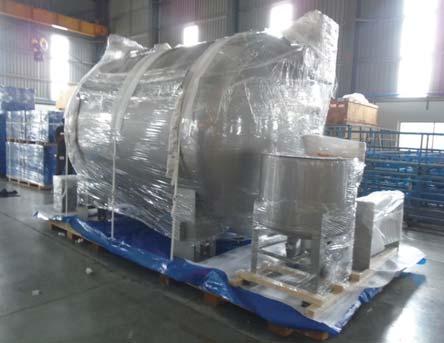
Key factors are minimal consumption of water, steam, chemicals and dyestuff, to ensure right-first-time results with lowest waste. The FabricMaster boasts an optimized chamber design,

resulting in the lowest liquor ratio among water-driven piece dyeing machines. The carbon footprint of the FabricMaster is designed to be the future industry benchmark for sustainability.
The FabricMaster’s self-cleaning lint filter keeps the system running smoothly to enhance productivity. It monitors lint accumulation and automatically cleans itself, minimizing downtime and maintenance hassles. Furthermore, the FabricMaster’s high-capacity heat exchanger accelerates heating gradients, reducing cycle times.
After dyeing, unloading the fabric swiftly is crucial. The FabricMaster features a frequency-controlled unloading winch, ensuring efficient fabric removal without compromising quality. The fabric lift from the chamber to the reel is less than half that of competitors’ machines, improving fabric transport.
The FabricMaster is a testament to Benninger’s commitment to innovation and quality. As it continues to gain traction in the Indian market, it promises to revolutionize fabric dyeing processes, setting new standards for efficiency, quality and precision to textile dyeing processes.


Stäubli launched its new TF30 weaving machine at Techtextil Frankfurt earlier this year in April. Now, visitors to Techtextil North America have the chance to learn more about this revolutionary machine at our booth in the German Pavilion in hall B. The TF30 enables weaving mills to produce new types of technical fabrics in sectors ranging from medicine to transportation, aerospace, and more.
Creating machinery for the production of fabrics that are essential to global innovation is what motivates and inspires our teams. Flexibility and support are prerequisites for weaving technical fabrics, especially with new materials and 3D forms. Partnering with customers, universities, and industries, and applying our decades of experience in R&D, we are constantly advancing our range of solutions and services.
This new Stäubli weaving machine boasts innovative, unique, and obvious benefits. With variable-height rapier weft insertion, it provides never-before-seen flexibility in shed programming and thus in weave structure. The weft-insertion concept ensures gentle yarn treatment, so the system can handle carbon and aramid yarns as well as ultra-sensitive ceramic yarns. Mills can choose from a wide range of Jacquard machines and customized harnesses perfectly suited to their weaving application.
What do printed circuit boards, airbags, lightweight carpets, and paper production filters have in common?
These and many more technical fabric applications are woven with the support of Stäubli machinery.
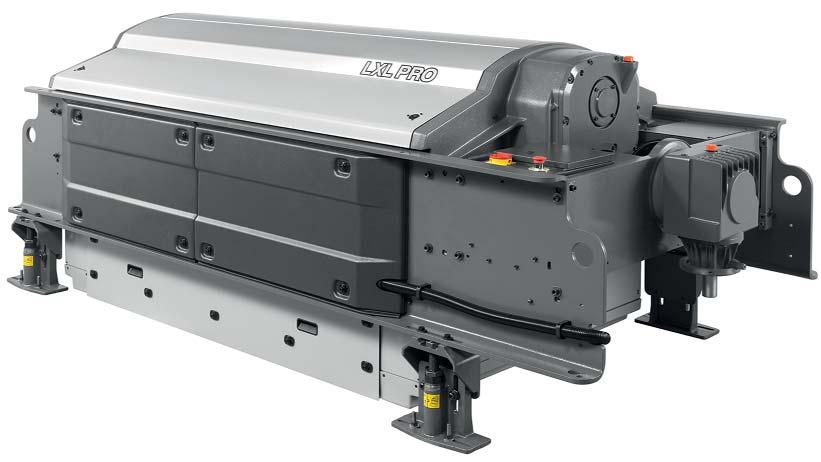
The SAFIR S32 automation solution for drawing in is used by weaving mills around the world to produce PCB boards and glass applications. LXL PRO electronic Jacquard machine for OPW airbag weaving Available in 4 formats and up to 14,336 hooks.
The LXL PRO Jacquard machine provides all the necessary features for one-piece woven (OPW) applications, including top-quality airbags in any format. Featuring NOEMI electronics architecture, this machine ensures a continuous Jacquard weaving process at the highest speeds and top energy efficiency. OPW weaving mills also use our TIEPRO warp-tying machine to achieve perfect knots with short ends that are easily passed through the reed, ensuring the proper order.
The Stäubli ALPHA 500 LEANTEC weaving system provides ingenious features for extremely uniform and precise loops, as required for lightweight carpets for the transportation sector.
The heavy-duty dobbies for very large frame weaving machines are renowned for their robust construction and ability to withstand vibration encountered e.g. in the production of paper machine filters.
These are just a few examples of what weavers can achieve with the support of Stäubli solutions. With a broad range of equipment for producing technical fabrics, from flat to 3D, Stäubli answers the needs of the weaving industry.
Fabric quality preservation is in our hands. And “in our hands” has a double meaning: that is on all of us; that leaders and experts in the textile industry must lead the way. Now, this can happen not on two parallel paths, but in a sort of modern agora where research, expertise, care, and passion for textiles and Made in Italy all convey one goal: preserve tradition and pursue innovation.
Biancalani Textile Machinery was looking for such a place exactly to support fabric quality preservation and to help find the ultimate key element: a connection among experts, innovators, and people passionate about fabrics. All three actors are important, as they represent a piece of the textile world. No wonder that place – and project – exists in one of the textile cities par excellence –from the Middle Ages to the present, Prato has been the cradle of textile manufacturing – in one of the textile museums par excellence. And no wonder it is called, simply and deeply, Textile Lovers.
We are talking about Museo del Tessuto in Prato (the Textile Museum of Prato), an actual retreat for textile experts, researchers, and anyone who loves the textile world, the largest cultural center in Italy dedicated to the promotion of historical and contemporary textile production and art, whose collections and exhibition are attended by key figures of the textile and fashion international industry. It was just a matter of time until


its path crossed the one of Biancalani Textile Machinery, as both the museum and the company are dedicated to fabric quality preservation and innovation.
The textile manufacturing legacy is something Biancalani Textile Machinery deeply wants to preserve as its founder,

Fiorenzo Biancalani, has been and still is the real pillar of the company, together with the knowhow that has been built since he started his mechano-textile journey. Thanks to constant research and development, Biancalani Textile Machinery has developed advanced finishing techniques and thus has managed to preserve textile tradition and get to innovative fabric processing.
Unsurprisingly, it became somewhat necessary to share these goals and support other potential goals of the kind by subscribing to the Textile Lovers project. It has meant taking action on an ethical level, to help building a place where textile knowledge is truly preserved, and to be part of the collective dialogue that emerges in a textile agora of the future. Biancalani Textile Machinery will take part.
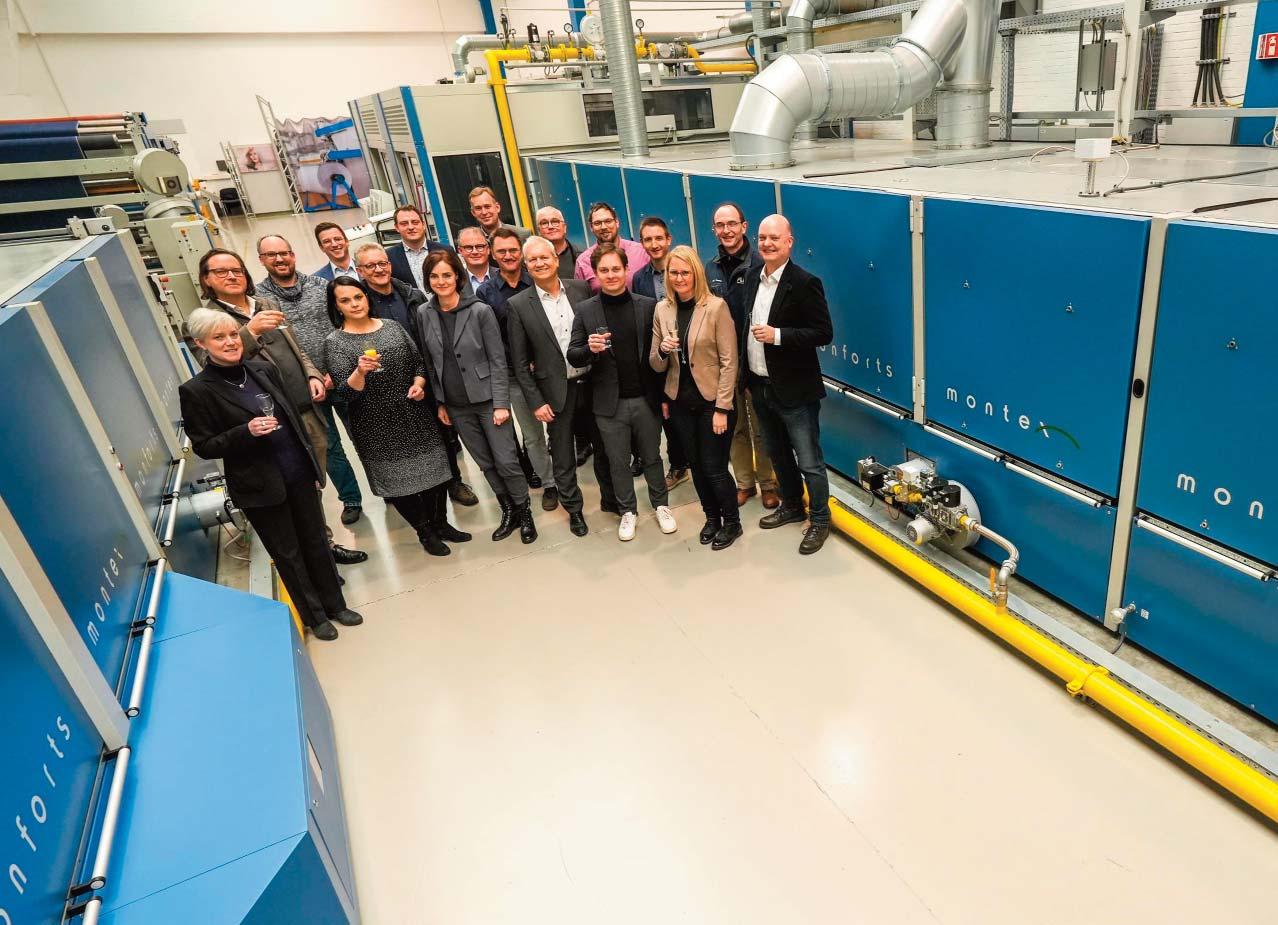

At the Dornbirn-GFC conference in Austria from September 11-13, Maike Rabe, head of the FTB research institute at Hochschule Niederrhein, provided the latest news from the German WasserSTOFF Project.
This project is being led by finishing machine leader Monforts and aims to develop a hydrogen-heated stenter frame that in the future will enable the carbonneutral finishing of textiles.
“The usual operation of stenter frames with natural gas currently leads to considerable CO2 emissions worldwide,”

Rabe explains. “Emissions can be significantly reduced by the alternative use of hydrogen converted through the use of electrical energy from renewable sources such as wind or solar – so-called green hydrogen.”
The project is investigating the effects of using hydrogen or hydrogen/natural gas mixtures instead of natural gas alone as the fuel for textile drying and fixation.
This requires the development and adaptation of the burners, including a gas mixing system, which controls the thermoprocess.
The mode of operation is initially being tested and evaluated on a gaspowered and burner-modified technical dryer with a power class of 40 KW per burner at Niederrhein’s Textile Technology Centre.
Specific textile coating and finishing/dyeing processes have been selected for drying and fixation and in order to optimise the processes and adapt the finishing recipes, tests are being
carried out to evaluate textile product quality, exhaust gas composition and energy balance.
In addition, a dynamic tool to evaluate the climate footprint of the drying system is being developed. This is taking into account factors such as the availability and origin of the required quantity of hydrogen (including in-house production and development of the electricity mix for hydrogen production) as well as hydrogen admixtures in the natural gas network – all based on existing standards and the Greenhouse Gas Protocol.
This data is forming the basis for the scaling-up of the technology to industrial level.
In addition to Hochschule Niederrhein and Monforts, the project also includes the companies Pleva and Nova TextilBeschichtung and is supported by the German Federal Ministry for Economic Affairs and Climate Action (BMWK).

Since 2020, the world of work, the political situation and, of course, the economic environment have changed for many people. Covid, the attack on Ukraine, de-coupling between the USA and China and much more have shaped the world and our lives since then. This has been accompanied by rising inflation, in particular energy costs have exploded, and in Germany there were even concerns about a gas supply shortage. Within a very short space of time, many employees moved to home offices and have remained there to this day. Schools and universities were only
partially able to keep up and some companies were overwhelmed by these challenges. But what does this have to do with the textile industry?
The EU's textile and clothing industry currently consists of around 160,000 companies that employ around 1.5 million people. Added to this are the indirect jobs of suppliers (chemicals, mechanical engineering, etc.), universities, service providers and many more. The future of the European textile industry is strongly influenced by energy costs. High and extremely volatile energy costs affect their competitiveness, in
addition to expensive and complex regulatory requirements for companies under the EU's Green Deal.
As entrepreneurs, we think in terms of solutions, not problems. Especially in times of crisis and under pressure, solutions emerge that might otherwise not have been created. However, investments require a reliable political environment that, if not promotes entrepreneurship, at least does not block it!
For us as a mechanical engineering company, physical proximity to customers and universities, with whom we develop
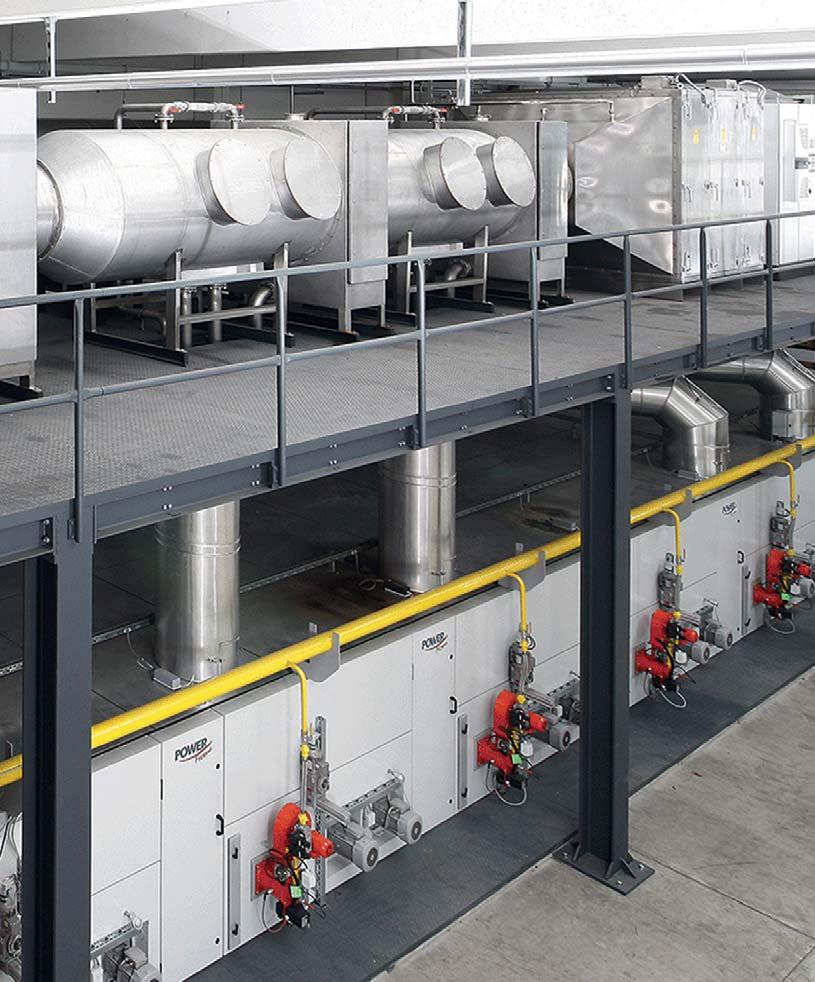
creative solutions, is extremely important. We are also convinced of the importance of medium-sized industry for secure jobs and prosperity. European textile companies and their environment create jobs and products that we need every day, both in clothing and in many other areas such as medicine, transportation, security, etc.
While Fridays for Future became more and more popular, climate
opponents blocked the streets, energy costs exploded and the media spread fear about the future, we tried to find out how much of these extreme scenarios are scientifically proven. This gave rise to the idea of founding 4Pi-Solutions: a nonprofit association that aims to provide impartial information about the scientific facts on climate change and the energy transition. The abbreviation stands for a comprehensive view of our planet: we are

committed to realistically achievable climate targets that give mankind sufficient time to reduce CO2 emissions and limit global warming. At the same time, we show the economy and politics opportunities to remain competitive in Europe in the future. It is important that industry optimizes its production processes and implements sustainable energy solutions worldwide. These must be accompanied by a global CO2 price, because we can only achieve something if we work towards this goal worldwide. Otherwise, companies will relocate to countries with lower energy costs and jobs in the textile industry will move from Europe to other regions. However, as there is currently no CO2 pricing in these regions and energy costs are very low, production takes place under worse conditions for people and nature. In extreme cases, even more CO2 is emitted and more resources are needed. In some areas, this is already happening today via platforms such as "Temu" or "Shein", which import to Europe at extremely low prices, thereby avoiding import taxes and making a new trend known as "ultra fast fashion". All of the EU's well-conceived ideas are being turned into the absolute opposite.
So if we still want to keep a functioning textile industry going in Europe in the future, the following is essential:
Political and legal framework conditions in the interests of all market participants in the EU
Stable and affordable energy
Good education in schools, universities and companies for lifelong learning
A desire for performance must be defined positively again
A policy that is based on facts and expertise and is prepared to critically scrutinize past decisions
With our association, we want to inform interested parties, explain the background, allay fears and also encourage the younger generation to play an active and positive role. Instead of blockades: develop new ideas, fight for good education, found start-ups and promote new ideas. You can read our demands regarding the energy transition and climate change on our website www.4PI-Solutions.com.

The U.S. Cotton Trust Protocol announced continued program expansion for the fifth consecutive year –both in enrolled growers and planted acres. Planted cotton acres enrolled increased to 2.1 million acres, up 31% from 2023. This growth is driven by a 35% increase in enrolled growers, demonstrating a strong commitment to sustainability within the cotton industry.
“We are proud to see steady increase in grower enrollment for the Trust Protocol for a fifth consecutive year, reflecting a continued commitment to sustainability within the cotton industry,” said Daren Abney, U.S. Cotton Trust Protocol Executive Director. “It is a collective effort that brings more responsibly produced cotton into the market, providing brands and retailers with greater access to sustainable sourcing options.”
With the increase of 35%, enrollment for 2024 now totals 1,327 growers participating in the Trust Protocol. Enrolled acres for the 2023 crop year resulted in a yield of 1.9. million bales of cotton. The expanded acreage for 2024
will further enhance the availability of sustainable cotton in the market.
“We look forward to supporting our brand and retailer members in their increased uptake of Trust Protocol Cotton and driving value back to our growers,” said Abney.
The Climate Smart Cotton Program also made strides towards its goal of enrolling at least 1,650 farming entities, including 330 from the historically underserved communities. In 2024, 1,340 Trust Protocol farming entities applied for Level 1 of the Climate Smart Cotton Program with 282 from historically underserved communities. These farming entities represent 444,000 acres.
Growers who are participating in Level 1 of the Climate Smart Cotton Program can now also apply for participation in Level 2. This provides the opportunity to receive additional financial risk-share for implementing Climate Smart Practices Changes into their operations that will allow for improved soil health, increased drought and flood resilience, and reduced greenhouse gas emissions.
The Trust Protocol’s core values include a commitment to U.S. cotton’s

legacy of authenticity, innovation and excellence, environmental stewardship, caring of people, and personal and corporate integrity. The program currently has more than 2,000 supplier members and over 40 companies and their brands including Ralph Lauren, Gap Inc., Levi Strauss & Co., Carhartt and J. Crew.
To learn more about the Trust Protocol and how to become a member, visit TrustUSCotton.org.
Oerlikon Neumag commissions BCF plant in China
Chinese automotive supplier Sailuda is expanding its process chain with the commissioning of a Oerlikon Neumag BCF plant. In future, the specialist for automotive interiors will produce its own BCF yarns. The company is thus integrating the entire process from the yarn to the finished carpet and can therefore better influence production and quality of its car carpets.
Sailuda is one of the major suppliers for international car brands such as BMW, Volvo, VW and Ford, but also for wellknown Chinese e-car manufacturers such as NIO, Lixiang and SERES. "The quality of our products is our recipe for success," says CEO John Zhu, explaining the strategy. The company has been reporting a constant increase in turnover for years. With its own in-house carpet yarn production, Sailuda wants to diversify its product range and create outstanding and exceptional end products. In this way, the visionary trendsetter is creating a competitive advantage in the highly competitive automotive sector.
Capacity expansion already being planned
John Zhu is certain that this will not be the only investment in yarn production. "The delivery and commissioning of the 2 positions BCF S+ plant for the production of PA6 and PET monocolor BCF yarns went so smoothly and quickly; this has encouraged us to invest in another system at the end of the year." John Zhu explains his decision for the proven S+ technology of the market leader for BCF yarn systems with the expected excellent quality of yarns produced on Oerlikon Neumag systems. "The yarns have a very uniform crimp with a high degree of coverage in the carpet." Sailuda is thereby securing its competitiveness in the demanding market for automotive carpets.

While the focus of carpet yarn production has so far been in the USA and Turkey, the up-and-coming automotive industry in China is giving the Asian carpet market a significant boost, among other effects. "We are registering increased demand for our BCF technologies," agree the responsible Sales Directors in China and Neumünster, Sun Peng and Arnd Luppold. "We attribute this to the rising production figures in the Chinese automotive industry; China is ahead in terms of figures, especially in the electric car sector. This is boosting demand for automotive carpets."
The three-end BCF S+ system impresses with its cost-effectiveness:
High production speed and capacity and reliable components combined with the highest yarn quality make this model particularly attractive for carpet yarn manufacturers.
Oerlikon is a leading provider of comprehensive polymer processing plant solutions and high-precision flow control component equipment. The division
provides polycondensation and extrusion lines, manmade fiber filament spinning solutions, texturing machines, BCF and staple fiber lines as well as nonwoven production systems. It also develops and produces advanced and innovative hot runner systems and multi-cavity solutions for the injection molding industry. Its hot runner solutions serve business sectors, including automotive, logistics, environmental, industrial applications, consumer goods, beauty and personal care and medical. Moreover, Oerlikon offers customized gear metering pumps for the textile, automotive, chemical, dyes and lacquers industries. Its engineering competence leads to sustainable and energy-efficient solutions for the entire polymer processing value chain with a circular economy approach.
Oerlikon Polymer Processing Solutions Division serves customers through its technology brands – Oerlikon Barmag, Oerlikon Neumag, Oerlikon Nonwoven and Oerlikon HRSflow – in around 120 countries with production, sales, distribution and service organizations.
The division is part of the publicly listed Oerlikon Group, headquartered in Switzerland, which has more than 12 600 employees and generated sales of CHF 2.7 billion in 2023.

Economic rotor spinning with more flexibility in raw material use. The rotor spinning machine R 37 has a new spinning box with adjustable trash extraction. This offers more flexibility when selecting the raw material. With up to 600 spinning positions, the R 37 ensures economical rotor spinning in the range Ne 3 to Ne 40 range.
Low energy consumption and simple, time-saving handling by operating personnel minimize production costs. The innovative AMIspin and optional AMIspin-Pro technologies ensure superior piecing quality. Fully independent machine sides provide high flexibility. The robot ROBOdoff, which is available as an option, automates package change.
The excellent spinning stability of the R 37 ensures high-volume production at a high production speed. The potential is enormous: With up to 600 spinning positions, yarn can be produced at a delivery speed of up to 200 m/min.
The highly efficient drive system offers low power consumption. An optional energy monitoring device can assist to further optimize energy consumption.

With ROBOdoff, which is available as an option, full packages can be changed automatically with no interruption to the spinning process, eliminating the exhausting task of manual doffing. The ROBOdoff ensures consistent package length within the defined tolerances.
The exceptionally low working height of the R 37 combined with the AMIspin piecing devices facilitates work of operators. As a result, more spinning positions can be served by one operator.
The redesigned spinning box with exchangeable trash channels enables higher levels of trash extraction, which offers more options when selecting raw materials.
Optimized fiber flow results in outstanding spinning stability and yarn tenacity. Ideal handling of the fibers guarantees more consistent yarn quality.
With AMIspin technology, outstanding piecing quality can be achieved. The optional AMIspin-Pro technology offers even higher standards of quality as well as increased success rates in piecings.
On the R 37 with fully independent machine sides two lots can be spun simultaneously. Two package conveyor belts prevent lots from being mixed up.
All setting parameters for the machine and the optional yarn clearer Q 10 can be adjusted on the large and easily understandable operating unit. Clearers with foreign fiber detection are available as option.
ROBOdoff automates the unpleasant task of manual doffing and ensures that all doffed packages have the same package length.
ESSENTIAL provides fact based optimization proposals, key performance indicators and even predicts downtime risks. This powerful tool supports management activities with comprehensive and clearly arranged digital analytics. With ESSENTIAL, it is possible to unlock the full range of digital value creation possibilities for the spinning mill.



The flagship store of Santoni (Shanghai) Knitting Machineries Co., Ltd. in Brazil has grandly opened in São Paulo on August 13, 2024. This is another pivotal milestone in the global expansion of Santoni Group after successfully opening two concept stores in Yiwu and Haining, China in 2022-2023, demonstrating its commitment to transform the global circular knitting ecosystem.
Santoni Group always puts the needs and satisfaction of its customers first. As the core of Latin American market, Brazil has great potential with the growing demand for high-quality and efficient circular knitting machines. Sao Paulo Flagship store will not only showcase cutting-edge products and technologies, it will also function as a interaction center to obtain in-depth understanding of local customers’ needs and expectations, thus providing them with more customized solutions. On the other hand, Chinese manufacturing enterprises have shown great progress in the wave of globalization in recent years. They proactively tapped into different markets, from Southeast Asia to other regions such as Latin America and Eastern Europe, reflecting a cross-continental expanding route. On the establishment of Sao Paulo flagship store, Santoni Group is able to navigate Chinese enterprises in Latin America market by continually empowering them with development momentum and competitive advantages.


Globalization requires efficiency and responsiveness of supply chains, which is critical to the competitiveness of enterprises. Santoni has always been committed to supply chain optimization to ensure rapid delivery with high quality. Sao Paulo flagship store is an important part of this fulfillment. As the region logistics hub, it will not only reduce delivery lead times and improve customer satisfaction, but also make efforts with suppliers and partners in Latin America to build a synergistic supply chain.
Innovation has always been Santoni’s DNA, facilitating innovative knitting solutions throughout the global market. Sao Paulo flagship store is just the innovation center of Latin America: It creates a platform for the latest technologies, industry trends and insights,

enables customers to grow business with new technologies, new products and new services required from the industry transformation.
With the vision of transforming the global circular knitting ecosystem, Santoni will take momentum of Sao Paulo flagship store to implement more localized projects. Let’s look forward to the grand blueprint of the knitting ecosystem leader on Latin American market!
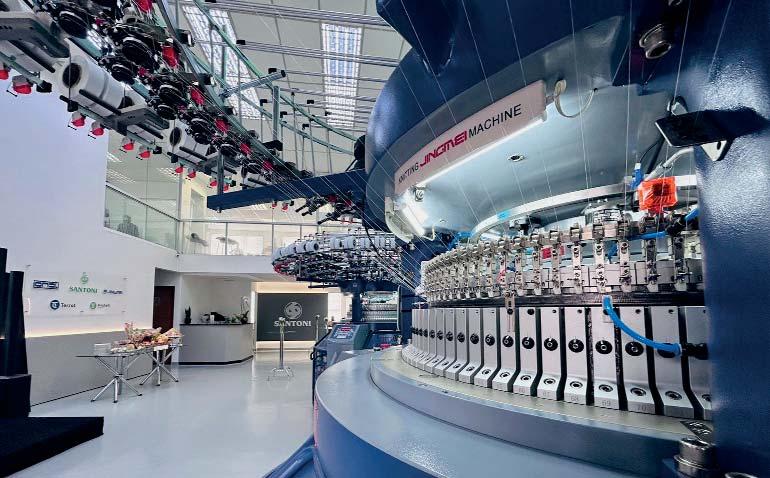
Trützschler and the Indian company Gimatex have a long relationship that began in 2006. Since then, they have successfully collaborated on many projects. Gimatex has used Trützschler’s IDF successfully in direct spinning. Now, they are using it to turn textile waste into valuable ring yarn.
Gimatex Industries Pvt. Ltd. has high standards for quality and sustainability. The company operates fully integrated facilities with ginning, spinning, recycling, weaving and processing units in Hinganghat, within India’s major cottongrowing region of Vidarbha. It also runs a state-of-the art fabric processing unit in Dholka, near Ahmedabad. As a familyowned company with over 125 years of history, it has a lot in common with Trützschler. Together, the two partners are working in close collaboration with the shared aim of extending that long history far into the future.
“Our clients demand consistent quality and competitive prices,” says Mr. Vineet Mohota, Director at Gimatex. “We meet those demands by always leveraging the latest technologies to boost quality, save energy and make progress for sustainability. Trützschler is a strong partner for that work.”
Trützschler’s Integrated Draw Frame (IDF) technology is at the heart of this
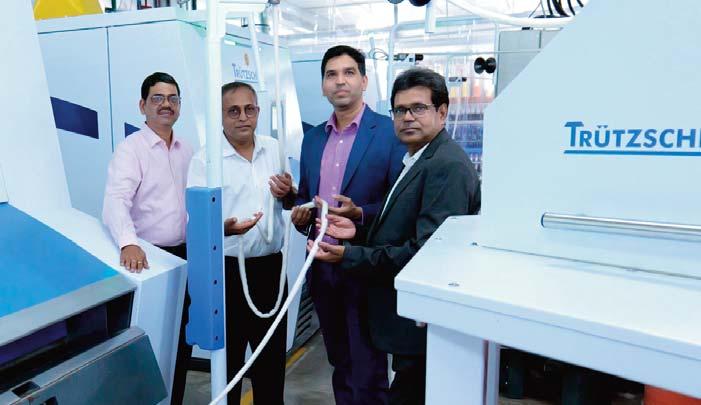
collaboration. Gimatex is using these innovative solutions to produce highquality yarn. In particular, IDF enables Gimatex to produce top-quality yarns from a uniquely wide variety of raw materials – from 100 percent cotton through to polyester, recycled fibers and blends of various different inputs.
Gimatex mainly uses Trützschler IDF to manufacture rotor yarns in a direct spinning process. Direct spinning means shortening the spinning process by eliminating draw frame passages. Fiber slivers are fed directly from the card into the integrated drafting passage. This direct spinning concept uses less electricity and less space than conventional draw frame passages, which helps Gimatex to cut costs while

increasing output volumes – with no compromise in quality. Most often, IDF technology is used for rotor and vortex spinning. However, the team at Gimatex is now also one of the first spinning mills in India to develop a special IDF process for producing traditional and recycled ring yarn. This allows the company to leverage the same setup it uses for openend yarn. The ring yarn produced in this unusual way is mostly coarser varieties and recycling blends for cotton / spandex (lycra) products, with Ne 10s and Ne 16s. The yarn goes through a blow room into a TC 15 card with IDF, before entering a Trützschler TD 10 draw frame, a speed frame and a ring frame.
“The performance of Trützschler’s IDF machines is great,” says Mr. Mohota. “We also get support from Trützschler’s expert teams. They’re always available to give guidance and answer questions, and they’re able to access data from around the globe to share best practices for every application.” Gimatex and Trützschler have established a close relationship over a long period. IDF machines are a flexible, highly efficient and sustainable technology that is helping to extend that valuable partnership. As market conditions in India continue to evolve, we will keep working hand in hand to adapt to change successfully – while meeting high expectations from customers.
Create2Inspire 2024, the 4th Student Design Competition to be held concurrent with the Inspiring Change Conference 2024 on 27th September 2024 at Pearl Continental Hotel Lahore. iTextiles Pvt Ltd., The LYCRA® Company, Neela Blue, Sapphire Fibres Limited and PretAge, as a sponsor envision innovative and creative thoughts by encouraging innovative designs and processes from the students, to help strengthen Pakistan’s textile manufacturing sector. The exciting part is that LYCRA® Technology (denim and knit) will be used in all designs to be showcased by the students of the leading Institutes/Universities.
According to Mr. Mujibullah Khan, CEO, iTextiles Pvt. Ltd. “Successful local designs could position Pakistan as a competitive player in the global textile market. Our motif encourages designs incorporating sustainable practices, such as eco-friendly materials and processes. The event will connect winners with local manufacturers, investors, and industry leaders to explore commercialization opportunities. Our focus is on improving the textile industry and creating a strong foundation for local manufacturing in Pakistan.”


Create2Inspire will exhibit the phenomenal talent of the students trying to inspire the world with their creative work. This competition provides a fresher perspective from the participants on how fashion can be inspiring. The winning students/ Institutes will be awarded a cash prize, and all participants will be given awards and certi¬ficates for their determination and hard work.
Improved textile designs and manufacturing capabilities can boost
the local economy and create job opportunities. Create2Inspire offers access to design tools, industry insights, or materials that could aid in their submissions.




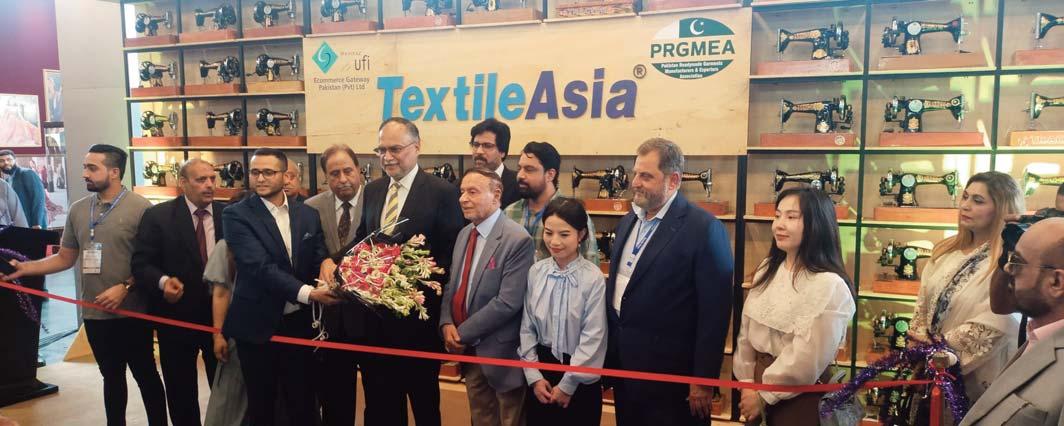
The 28th Textile Asia International Exhibition and Conferences 2024 held at the Lahore Expo Centre from August 9-11, 2024. Organized by Ecommerce Pvt Ltd with Strategic Partnership with the Pakistan-China Joint Chamber of Commerce & Industry (PCJCCI), this event brought together industry leaders, innovators, and enthusiasts from over 11 countries, with over 550 companies with both local and foreign participations.
This largest textile exhibition of Pakistan, covering all 3 halls of the Lahore Expo Centre, featured textile machinery, accessories, raw materials, and services, offering opportunities for global industry players to explore new business avenues and forge partnerships.
Mr. Salahuddin Hanif, Secretary General of PCJCCI, expressed pride in
strategizing with this platform to showcase Pakistan’s textile capabilities and support growth and excellence. Mr. Ahsen Iqabal and Mr. Uzair Nizam, President of the Exhibition, welcomed participants, highlighting the commitment to innovation and excellence.
The Pakistani textile industry came together to drive innovation, foster partnerships, and propel the industry towards sustainable growth.
Message from Mr. Uzair Nizam, President of the Exhibition
"As we convene for the Textile Asia International Exhibition and Conferences 2024, I extend a warm welcome to participants, exhibitors, and delegates from across the globe. Our commitment to excellence and innovation drives us forward, and this year's event promises to be

a testament to the collective vision and ingenuity of the global textile community. Let us come together to share insights, foster collaboration, and shape the future of textiles."
Message from Dr. Khursheed Nizam, Group President of Ecommerce Gateway Pakistan
"The Textile Asia International Exhibition and Conferences has long been recognized as a beacon of excellence in the textile industry. With participants from over 11 countries and a significant presence of more than 550 foreign delegates, this year's exhibition underscored the global significance of Pakistan's textile sector. We are happy to see that the stakeholders had joined us in this collaborative endeavor to drive innovation, foster partnerships, and propel the industry towards sustainable growth and prosperity."
Ecommerce Gateway Pakistan is a renowned event management company dedicated to promoting trade and investment opportunities across various sectors. With a legacy of organizing successful international exhibitions and conferences, we remain committed to facilitating global partnerships and driving economic growth through innovation and collaboration.





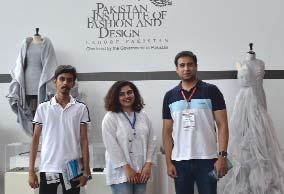



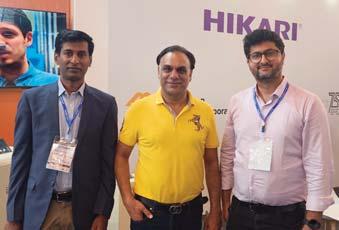

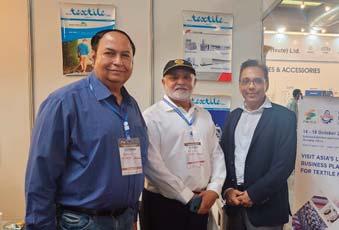



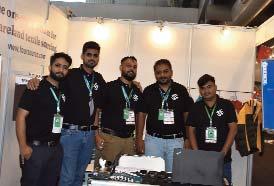




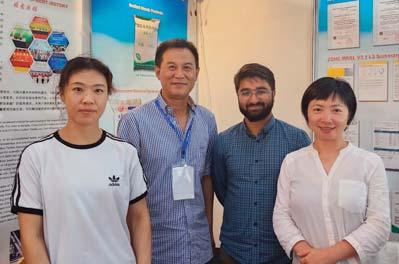

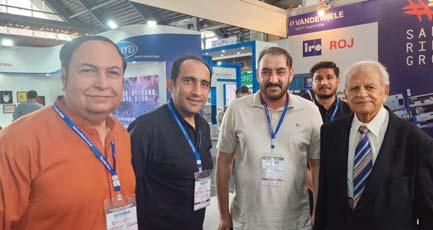




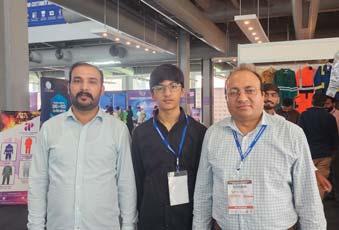







By Engr. Naeem Khanani, Associate Editor, Pakistan Textile Journal; Director, Fahim, Nanji & deSouza FND Consulting Engineers; Co-Author: Engr. Najib Rehman, Associate FND Consulting Engineers
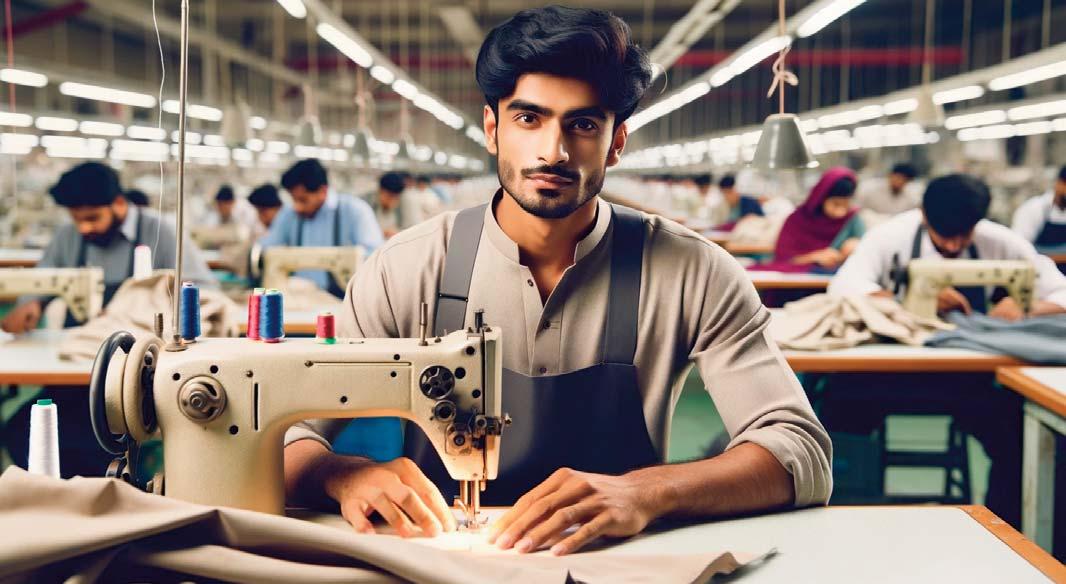
1. Introduction
The textile industry is a cornerstone of Pakistan's economy, contributing significantly to exports and employment. However, the global shift towards sustainability necessitates that Pakistan's textile sector evolves to meet environmental, social, and economic challenges. This article outlines a strategic roadmap for enhancing sustainability in Pakistan's textile industry, drawing on valuable lessons from Sri Lanka and Bangladesh. Key focus areas include environmental sustainability, energy efficiency, waste management, and fire safety.
Textile Exports in 2023 : Pakistan: In 2023, Pakistan’s textile exports were valued at approximately
$19.3 billion. (Source: Pakistan Bureau of Statistics)
Bangladesh: Bangladesh’s textile exports stood at around $45.7 billion in 2023. (Source: Bangladesh Garment Manufacturers and Exporters Association - BGMEA)
Sri Lanka: Sri Lanka’s textile exports were valued at approximately $5.4 billion in 2023. (Source: Sri Lanka Export Development Board - SLEDB)
2. Lessons from Sri Lanka
Green Certification & Compliance:
Sri Lanka's apparel industry has become a global leader in sustainability by adopting internationally recognized green certifications such as LEED (Leadership in Energy and Environmental Design) and ISO 14001 for environmental management. This
commitment has not only improved environmental outcomes but also enhanced market competitiveness.
Lesson for Pakistan: Textile manufacturers in Pakistan should be encouraged to pursue international green certifications to align with global sustainability standards and enhance their market position.
Energy Integration:
Sri Lanka has made commendable progress in integrating renewable energy, particularly solar power, into its textile operations. This shift has significantly reduced the industry's reliance on nonrenewable energy sources, contributing to lower carbon emissions.
Lesson for Pakistan: Investment in renewable energy sources like solar and wind can help Pakistan’s textile sector
reduce its carbon footprint and energy costs, paving the way for a more sustainable future.
Water Management Practices:
Efficient water usage and wastewater management have become hallmarks of Sri Lanka's textile industry. The implementation of wastewater treatment and recycling systems has addressed water scarcity and environmental concerns.
Lesson for Pakistan: By adopting water-efficient technologies and recycling practices, Pakistan can mitigate water scarcity issues and improve the sustainability of its textile production.
3. Lessons from Bangladesh
Worker Safety and Compliance:
In the wake of the Rana Plaza disaster, Bangladesh has made significant strides in improving worker safety, particularly in fire and building safety. This has involved strengthening regulatory frameworks and implementing stringent safety protocols.
Lesson for Pakistan: Pakistan’s textile sector must prioritize the development and enforcement of comprehensive fire safety regulations and building codes to ensure worker safety and avoid similar tragedies.
Sustainable Production Techniques:
Bangladesh has also embraced sustainable production techniques, such as the use of organic cotton and chemical-free dyes, reducing the environmental impact of textile manufacturing.
Lesson for Pakistan: Promoting the use of sustainable raw materials and ecofriendly production processes can help Pakistan’s textile industry reduce its environmental footprint while meeting growing consumer demand for sustainable products.
Public-Private Partnerships:
The success of Bangladesh’s sustainability initiatives has been largely due to strong collaborations between the government, industry, and international organizations. These partnerships have facilitated the implementation of sustainability practices and attracted investment.

Lesson for Pakistan: Fostering similar public-private partnerships in Pakistan can drive the funding and implementation of sustainability initiatives, ensuring long-term industry viability.
4. Role of Academia
Research & Development:
Textile Universities in Pakistan have a critical role to play in driving innovation in sustainable textile technologies, such as biodegradable materials and energyefficient manufacturing processes. Collaborative R&D efforts can lead to breakthroughs that position Pakistan as a leader in sustainable textiles.
Curriculum Development:
Integrating sustainability into engineering and textile curricula is essential for equipping future professionals with the knowledge and skills needed to implement sustainable practices in the industry.
Collaborative Projects:
Partnerships between academia and industry should be encouraged to address sustainability challenges in the textile sector, ensuring that research efforts are aligned with industry needs.
5. Involvement of Professional Engineering Bodies
Guidelines & Standards Development:
Professional bodies like IEP, IEEP, and ASHRAE Pakistan should lead the development and enforcement of
industry-specific guidelines and standards for sustainability and energy efficiency in the textile sector.
Training & Certification Programs:
These bodies can also offer specialized training and certification programs for engineers and professionals on sustainable textile manufacturing practices, helping to build a skilled workforce committed to sustainability.
Consultancy Services:
Providing consultancy services on implementing sustainable practices, including energy audits and lifecycle assessments, can further support textile manufacturers in achieving sustainability goals.
6. Role of Key Organizations in Carving Out the Roadmap
Pakistan Green Building Council (PGBC):
The PGBC plays a pivotal role in promoting green building practices within Pakistan’s textile industry. By advocating for LEED certification and green building standards, the PGBC can help textile manufacturers align with international sustainability benchmarks. The council can also offer guidance on sustainable factory design, energy-efficient buildings, and waste management systems, contributing to the overall sustainability of the industry.
National Energy Efficiency & Conservation Authority (NEECA):
NEECA’s mandate to enhance energy efficiency across industries makes it a
crucial player in the textile sector’s sustainability journey. NEECA can provide technical assistance and policy guidance to ensure that textile mills adopt energyefficient technologies and practices. By implementing energy conservation measures, NEECA can help reduce the textile industry’s energy consumption, lowering operational costs and minimizing environmental impact.
Building Codes & HVACR Trends:
The enforcement of modern building codes that emphasize sustainability, fire safety, and energy efficiency is essential for the textile industry. Integrating the latest HVACR (Heating, Ventilation, Air Conditioning, and Refrigeration) trends, such as energy-efficient cooling systems and smart building technologies, can further reduce energy consumption and improve indoor air quality in textile factories. ASHRAE Pakistan can play a key role by setting HVACR standards and providing training on the latest technologies.
ASHRAE Pakistan:
ASHRAE Pakistan’s expertise in developing standards for building systems, energy efficiency, and indoor air quality is invaluable for the textile industry. The organization can support the industry by offering training on sustainable HVACR practices, conducting energy audits, and promoting the adoption of ASHRAE standards. These initiatives will help textile manufacturers optimize their energy use, enhance
worker comfort, and contribute to sustainability goals.
Accord Pakistan:
Modeled after the Accord on Fire and Building Safety in Bangladesh, Accord Pakistan can play a critical role in ensuring that textile factories adhere to stringent fire safety and building standards. This initiative can work closely with industry stakeholders to conduct regular inspections, enforce compliance with safety regulations, and provide training on fire prevention and emergency response. By prioritizing worker safety, Accord Pakistan can help the textile industry avoid disasters and enhance its global reputation.
7. Fire Life Study for Textile Industry in Pakistan
Assessment of Current Practices:
A comprehensive study should be conducted to assess the current fire safety practices in Pakistan's textile industry. This assessment will identify gaps and areas for improvement.
Development of Safety Protocols:
Based on the assessment, standardized fire safety protocols tailored to the specific needs of the textile industry should be developed and implemented.
Implementation of Safety Measures:
Advanced fire detection, prevention, and suppression systems must be installed
in textile factories to safeguard workers and assets.
Regular Audits & Inspections:
A framework for regular fire safety audits and inspections should be established to ensure continuous compliance with safety standards.
8. Proposed Action Plan
Short-Term Goals (1-2 years):
Initiate pilot projects on renewable energy integration in textile factories. Develop and roll out fire safety training programs for textile workers and management.
Medium-Term Goals (3-5 years):
Achieve industry-wide adoption of green certifications and sustainability standards.
Strengthen industry-academia partnerships for research and innovation in sustainable textile technologies.
Long-Term Goals (5-10 years):
Position Pakistan as a leader in sustainable textile manufacturing in the region.
Ensure complete industry compliance with global sustainability and safety standards.
9. Conclusion
By learning from the successful sustainability initiatives in Sri Lanka and Bangladesh, and leveraging the expertise of organizations like the Pakistan Green Building Council, NEECA, ASHRAE Pakistan, and Accord Pakistan, Pakistan's textile industry can develop a robust roadmap towards achieving environmental, social, and economic sustainability. The involvement of academia, professional bodies, and engineering experts is crucial in realizing this vision, ensuring that Pakistan’s textile sector remains competitive on the global stage while contributing to a more sustainable future.( Author can be reached for comments at naeemkhanani@gmail.com or info@ptj.com.pk )

Pakistan Textile Journal with other professional bodies is planning to start webinar series on Sustainable Textiles for export growth.

by Nadeem Mazhar, Managing Editor, Pakistan Textile Journal
Pakistan and China have long enjoyed a friendly and robust relationship—one that has withstood changes in government and regional or global political shifts. The partnership between the two nations has not only endured but also continues to expand and strengthen. Both countries are keen on developing strategies to navigate emerging regional and global challenges, ensuring their alliance remains beneficial and secure.
China's GDP grew by 4.4% in 2023, marking a moderate recovery driven by robust performances in the clean energy, automotive, and electronics sectors. Solar energy and electric vehicle production were particularly strong contributors to this growth. China’s textile machinery industry continues to dominate the global market, with the sector expected to reach 10.1 million units by 2026, growing at a
compound annual growth rate (CAGR) of 9.1%. The rise of high-tech and automated machinery in textile production, especially in technical textiles and nonwovens, is driving this expansion.
Globally, the textile machinery industry is highly competitive, with China, Germany, Italy, Switzerland, and India as key players. Changing fashion trends sustain demand for new textiles, which in turn boosts demand for advanced textile machinery. The knitting machine market, particularly for 3D knitting technology, is projected to grow at a CAGR of 27.4% by 2026, driven by automation and artificial intelligence. Additionally, China’s sewing machine market is expected to reach $2 billion by 2030, with a CAGR of 6%.
The global textile machinery market, which stood at 5.9 million units in 2020, is expected to reach 10.1 million units by 2026, driven by the spinning machine segment, projected to grow at a CAGR of
7.6%. The draw texturizing machine segment is expected to expand at a CAGR of 18.6% over the next seven years. Meanwhile, the U.S. textile machinery market was valued at $3.03 billion in 2023, and Asia-Pacific is expected to grow to $23.94 billion by 2033, with a CAGR of 5.7%.
China remains the largest manufacturer in the global textile machinery industry, benefiting from advantages in cotton spinning equipment, polyester production, and dyeing-printing machinery. Compared to countries like India, Pakistan, Bangladesh, and Turkey, China’s textile machinery is more cost-effective, with an emphasis on high-tech and value-added products. China’s Ministry of Industry and Information Technology aims to increase the proportion of high-tech products in sales from 40% to 60%, and research and development funding from 2% to 5% annually.
In recent years, China has focused on technical textiles and automation in textile manufacturing, with Shanghai emerging as a fashion-conscious hub. The country’s move towards fast fashion products is driving investments in production lines. China is not only an exporter but also a significant importer of textile machinery, with Jiangsu, Zhejiang, and Guangdong accounting for 71% of the country's imports. Many global machinery manufacturers have set up production bases in China to tap into its vast market.
The rapid industrialization and economic development in China have spurred a rise in textile production across Asia. The shift from traditional to advanced textile machinery is driven by increasing demand for home textiles, furniture upholstery, automobile textiles, and fashion products. Asian countries such as China, India, Bangladesh, and Pakistan are expected to continue benefiting from the relocation of manufacturing operations from the EU and US to capitalize on cost advantages, positioning Asia-Pacific as the fastestgrowing region for textile machinery.
The relationship between Pakistan and China is characterized by mutual trust, respect, and goodwill towards each other. There is a regular exchange of visits at the highest levels between the two countries. The strategic cooperation between Pakistan and China has grown over the past several decades.
China is Pakistan’s largest trading partner and a major investor, especially in the infrastructure and energy sectors. During 2022-23, bilateral trade between

the two countries reached US$ 11 billion. With projects like the China-Pakistan Economic Corridor (CPEC), the relationship has been elevated to a higher level.
China and Pakistan are situated in an area of great geographical importance, which hosts almost half of the world’s population. Along with human resources, the area is also rich in natural material resources. This speaks volumes about the importance of stability and amicable relations among the countries in the region. The growth in economic ties began with the signing of the free trade agreement between the two countries.
The China-Pakistan economic corridor project (CPEC) is another milestone in the development of their bilateral relations. The leadership of the two countries has attached top priority to its early implementation.
Besides trade, there has also been an unprecedented increase in China’s investment in Pakistan. According to data
Source: State Bank of Pakistan - Annual Reports.
from the Chinese Embassy in Pakistan, a total of 46 CPEC projects are under construction or have been completed, and the corridor has brought US$ 25.4 billion in foreign direct investment to Pakistan, creating 75,000 jobs for locals. This serves as a focal point for China and Pakistan to drive practical cooperation.
There has been a manifold increase in the number of Chinese companies operating in Pakistan. Currently, around 10,000 Chinese workers are engaged in various projects undertaken in Pakistan.
It is important to note that both countries emphasize their mutual relations in their foreign policy. Pakistan supports the Chinese perspective on the one-China policy, as well as on issues related to Tibet and Taiwan. In return, China consistently provides defense and economic assistance to Pakistan.
In Pakistan, there is substantial Chinese investment expected for the development of infrastructure, roads, highways, ports, and energy and communications sectors. CPEC energy projects have added thousands of megawatts of installed capacity to the country's grid, eliminating the electricity shortage that persisted for the last 20–25 years.
Pakistan welcomes Chinese investment for social and economic development. Chinese investment in Pakistan is gradually increasing, which is very important for long-term economic development.
Since the establishment of diplomatic ties between the two countries in 1951,
China and Pakistan have developed an all-weather friendship based on equality and overall cooperation. In recent years, the two countries have engaged in multidimensional cooperation across various fields. Despite an unstable international situation, the China-Pakistan friendship has remained strong and vibrant. Recent years have witnessed frequent exchanges of visits between the leadership of the two countries to further promote cooperation.
China and Pakistan have experienced steady growth in mutual investments in recent years. Numerous Chinese companies are currently working in Pakistan across different sectors. Chinese goods are highly sought after in Pakistani markets.
Both countries continue to plan and undertake mega economic projects like the China-Pakistan Economic Corridor (CPEC), connecting the Pakistani port of Gwadar with Kashgar in the Xinjiang region of China. Other projects include the construction of dams and investments in the textile, energy, banking, commerce, and industry sectors, along with numerous other development initiatives.
The government of Pakistan plans to develop nine special economic zones across the country under the CPEC to promote industrialization. Pakistan also places high hopes on the CPEC and, in particular, Gwadar port to transform itself into a regional trade hub.
Due to numerous agreements, Pakistan’s volume of bilateral trade expanded, reaching US $11 billion in 2022-23. The trade balance has skewed in China’s favor ever since both countries entered into various trade agreements. Comparing trade between the two, Pakistan’s exports to China decreased from US $2.78 billion in 2021-22 to US $2 billion in 2022-23. In contrast, China’s exports to Pakistan also decreased from US $17.3 billion in 2021-22 to US $9.6 billion in 2022-23. Pak-China trade details are presented in Table 1.
China is among the top importers of Pakistani cotton yarn and cotton fabrics. It is also important to note that the trade is not restricted to
Source : Trade Development Authority of Pakistan

cotton only, as China ranks as one of the largest buyers of metals and metalloids. Other major Pakistani exports to China include cotton yarn, rice, frozen fish, ready-made garments (RMG), cotton fabrics, surgical instruments, and leather. Exports from Pakistan to China are summarized in Table 2.
On the other hand, Pakistan’s imports from China have been unrivaled. Pakistan imports a significant percentage of goods from China; more than 29% of its overall imports come from there. The imports mainly include textile machinery, electrical equipment, high-tech machinery, iron and steel, organic chemicals, and manmade filaments. More than half of Pakistan’s electronic and machinery imports come from China.
Archroma Pakistan Ltd ....................................................3
Chhipasons.................................................................64
Cotton USA..........................................................IFC&1
Fong’s National Engineering ......................................11
HVACR Trends 2024 ..................................................39
ITMA ASIA + CITME, Singapore 2025......................IBC
ITMA ASIA + CITME, 2024..........................................6
IGATEX Pakistan 2025...............................................33
Italian Trade Commissioner........................................BC
iTextiles................................................................19&53
Jet Logistics................................................................64
Pakistan Solar Solutions..............................................64
Rastgar.................................................................25&64
Sedo Engineering........................................................FC
Textile Asia 2025 .......................................................57
Zhejiang Rifa................................................................9





